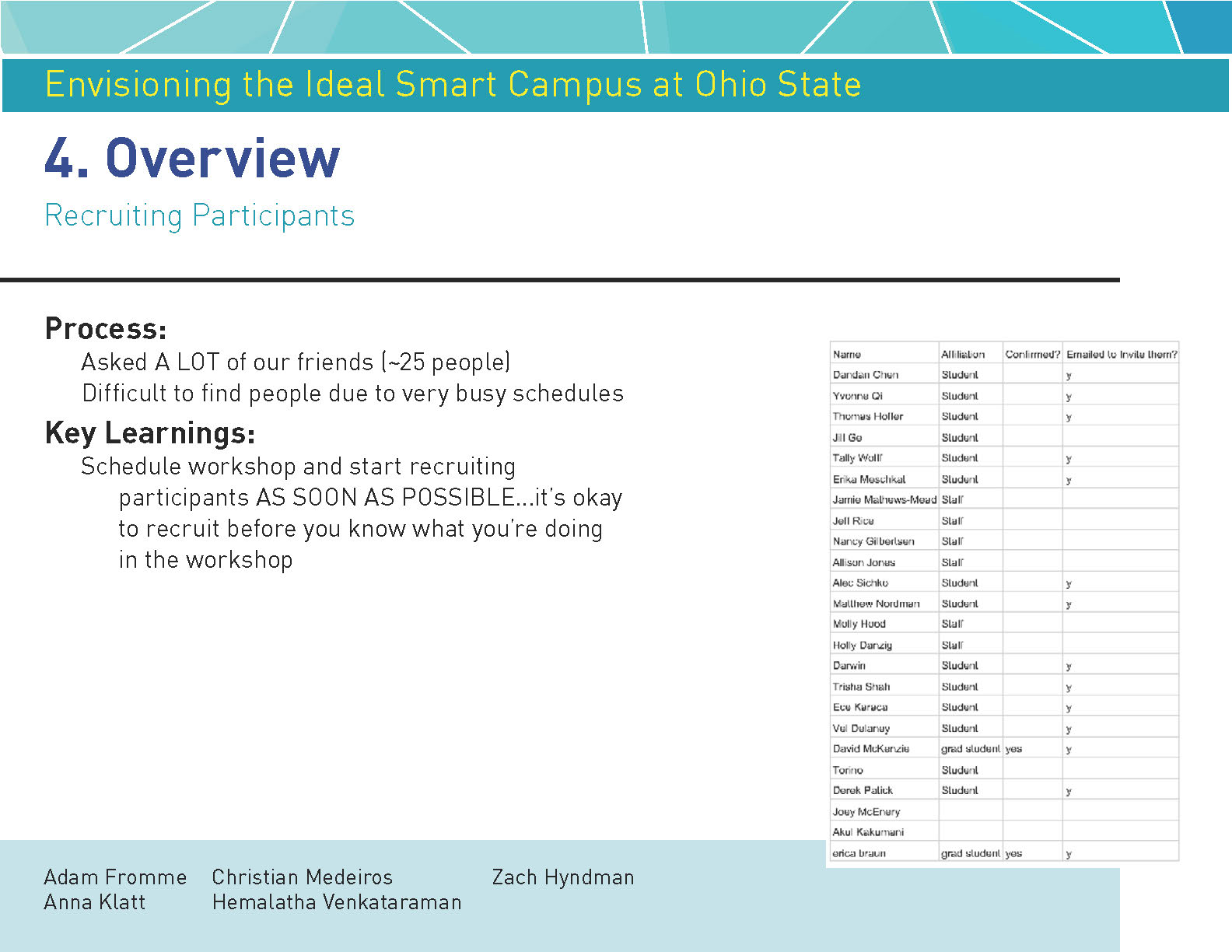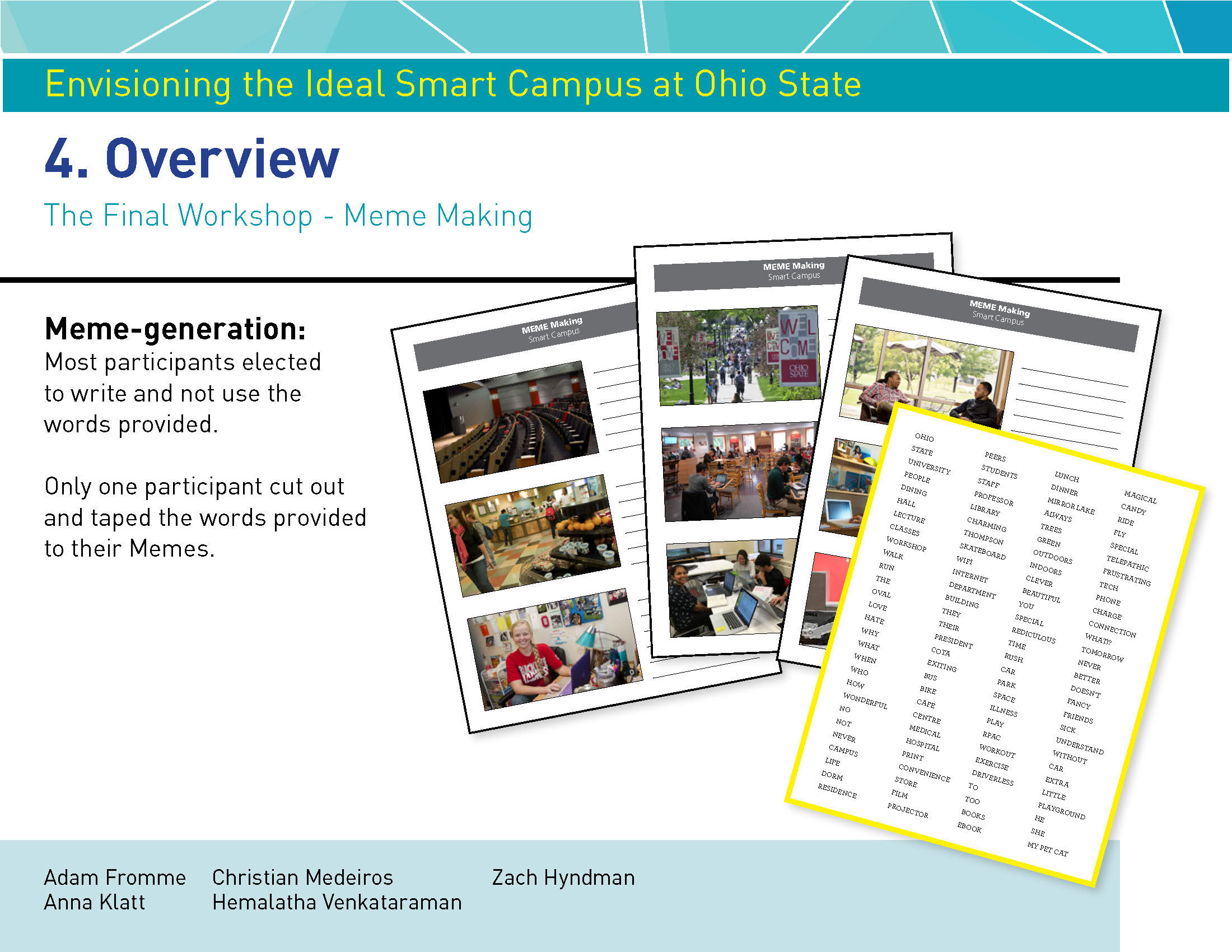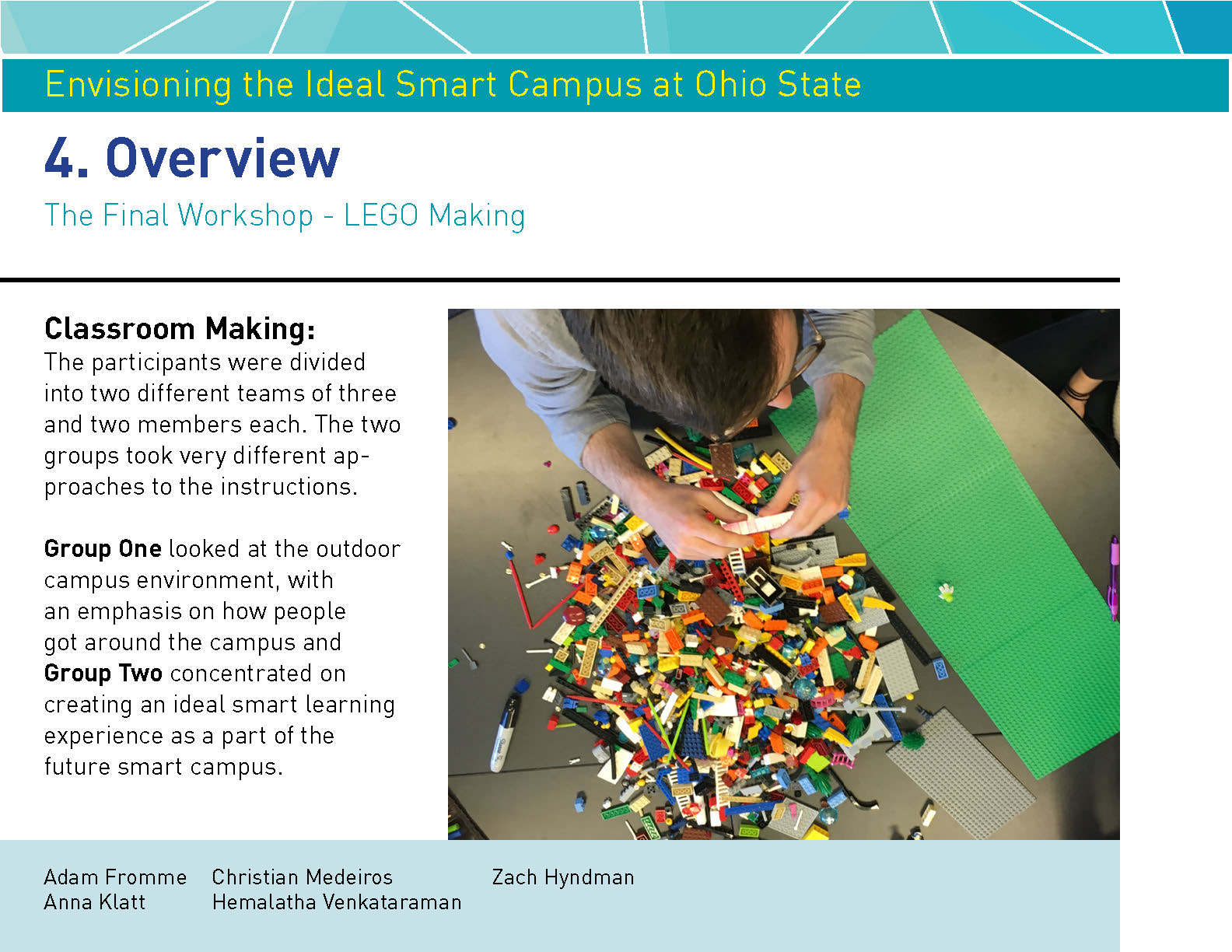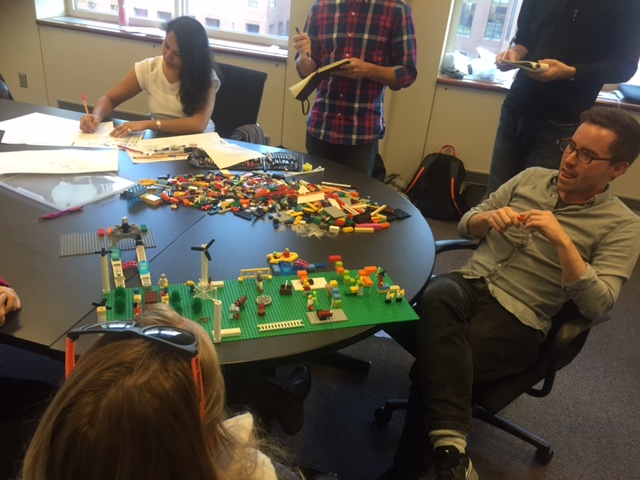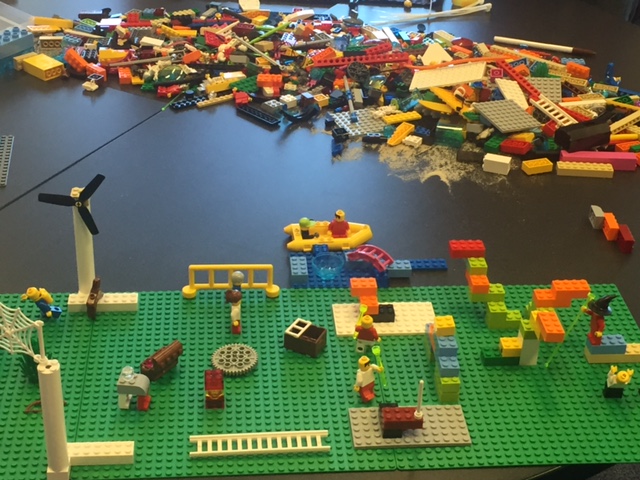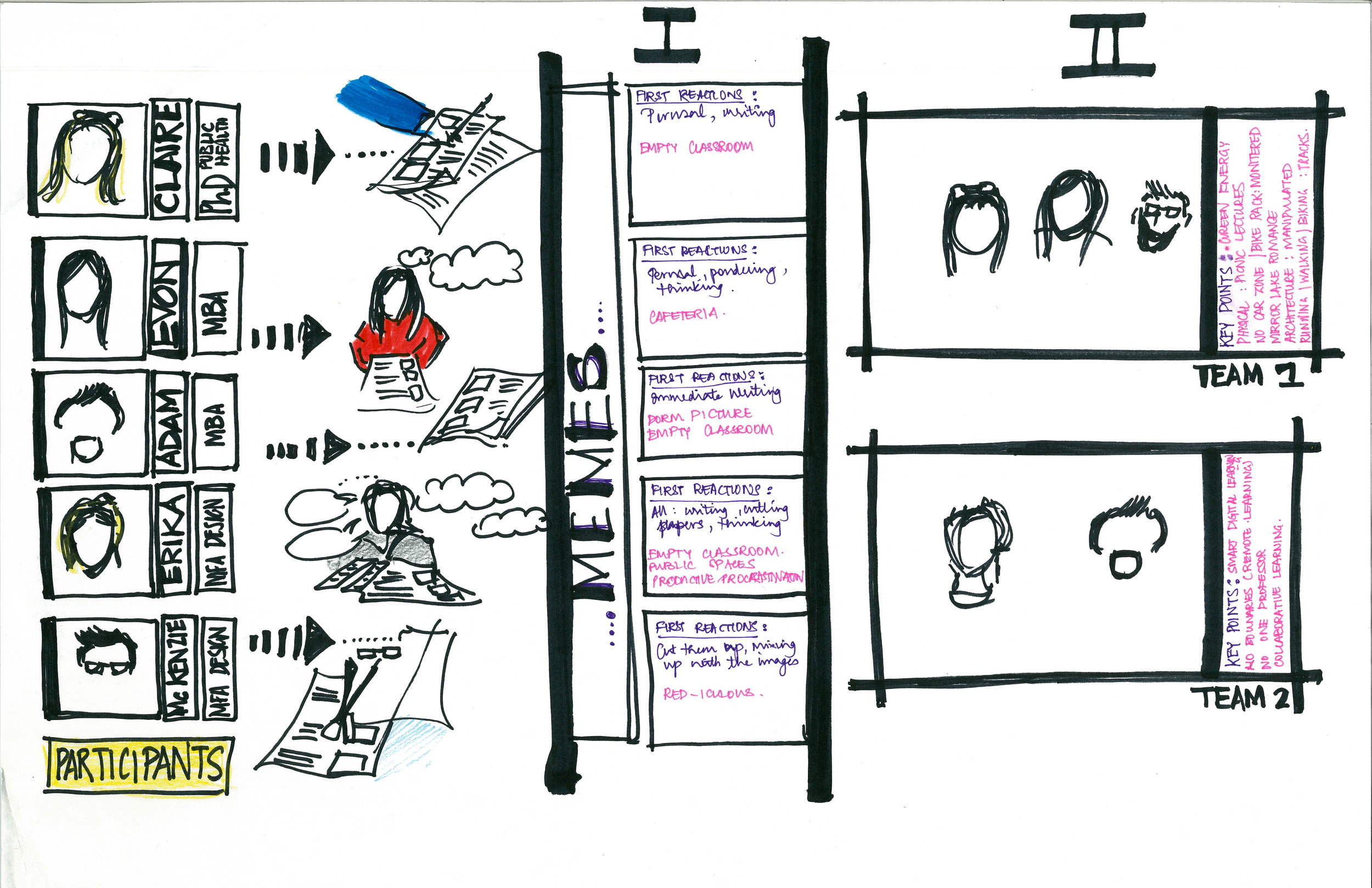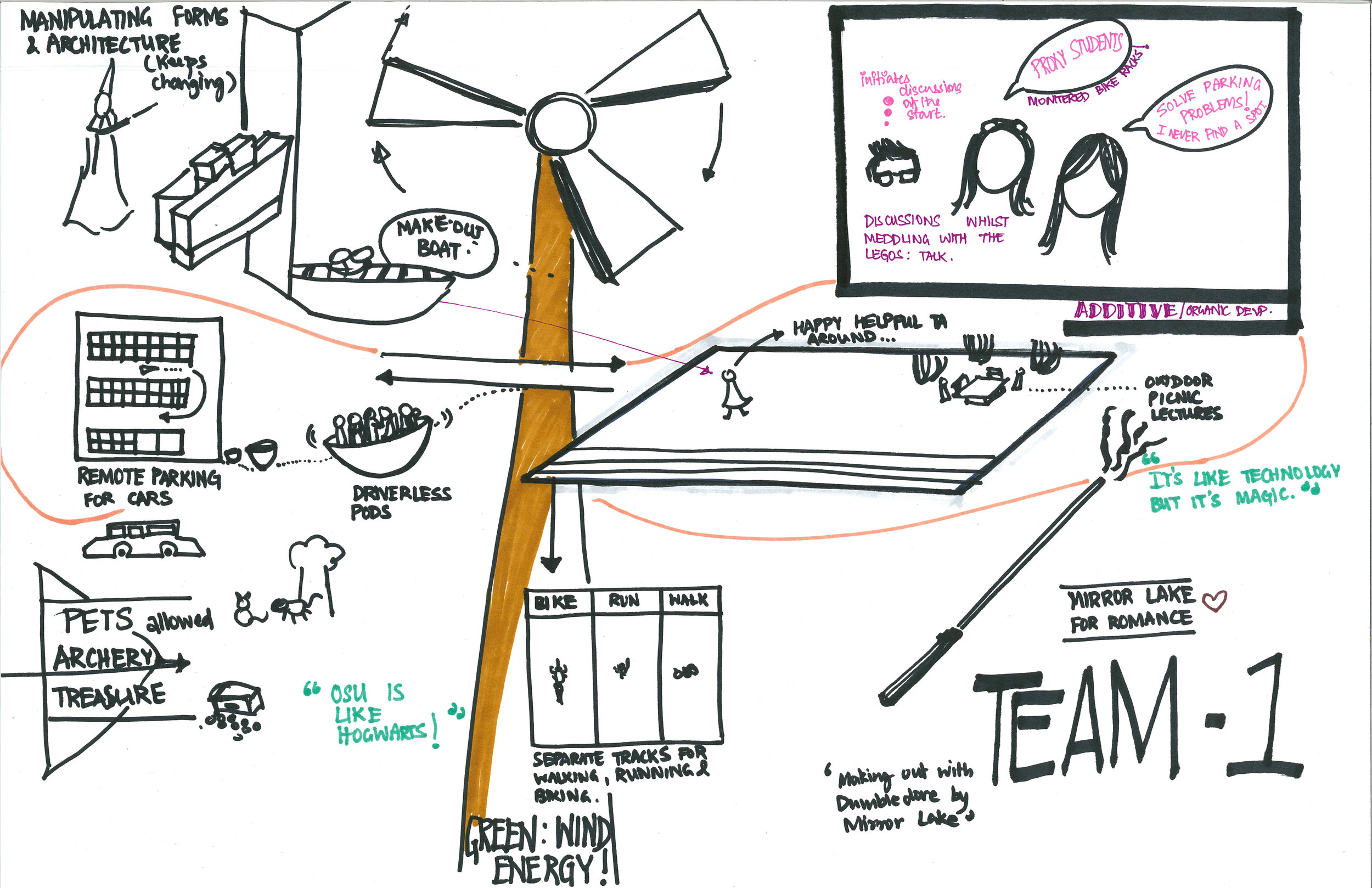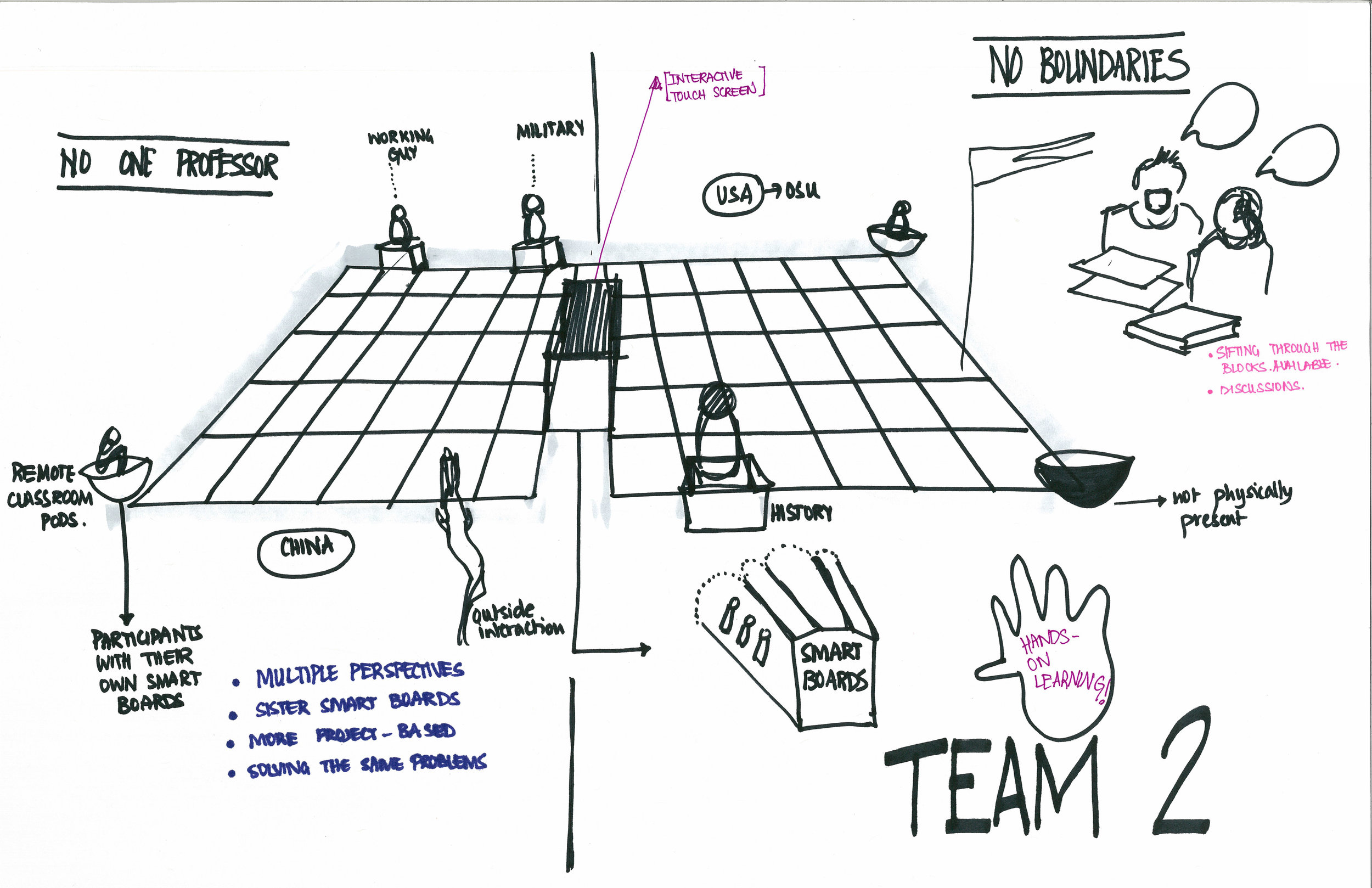SMART CAMPUS: A CO-DESIGN STUDIO
This was one of the co-design studio classes where we had the opportunity to work in the front end of design, by designing and conducting generative design research activities. We were comprised of an interdisciplinary team of graduate students from Design and Masters of Business Administration. It was interesting to work with MBA students in particular as they come with critical thinking, marketing, and delivery skills. This studio project allowed for a wonderful learning process. A booklet was also produced towards the end of this research which has all details about the generative methods used in this research. Please download if you want more information ( only the condensed version will be found on this page).
Team Members: MBA (from Fisher College of Business) candidates- Zach Hyndman, Anna Klatt, Christian Medeiros; Design Research and Development candidates- Adam Fromme and Hemalatha Venkataraman
OVERVIEW
This part consists of an overview of the objectives, stakeholders and goals for the research. We explored several research methods and conducted pilot tests with our peers to test the working of the generative activities before conducting the final research (view "project documentation" for a detailed look).
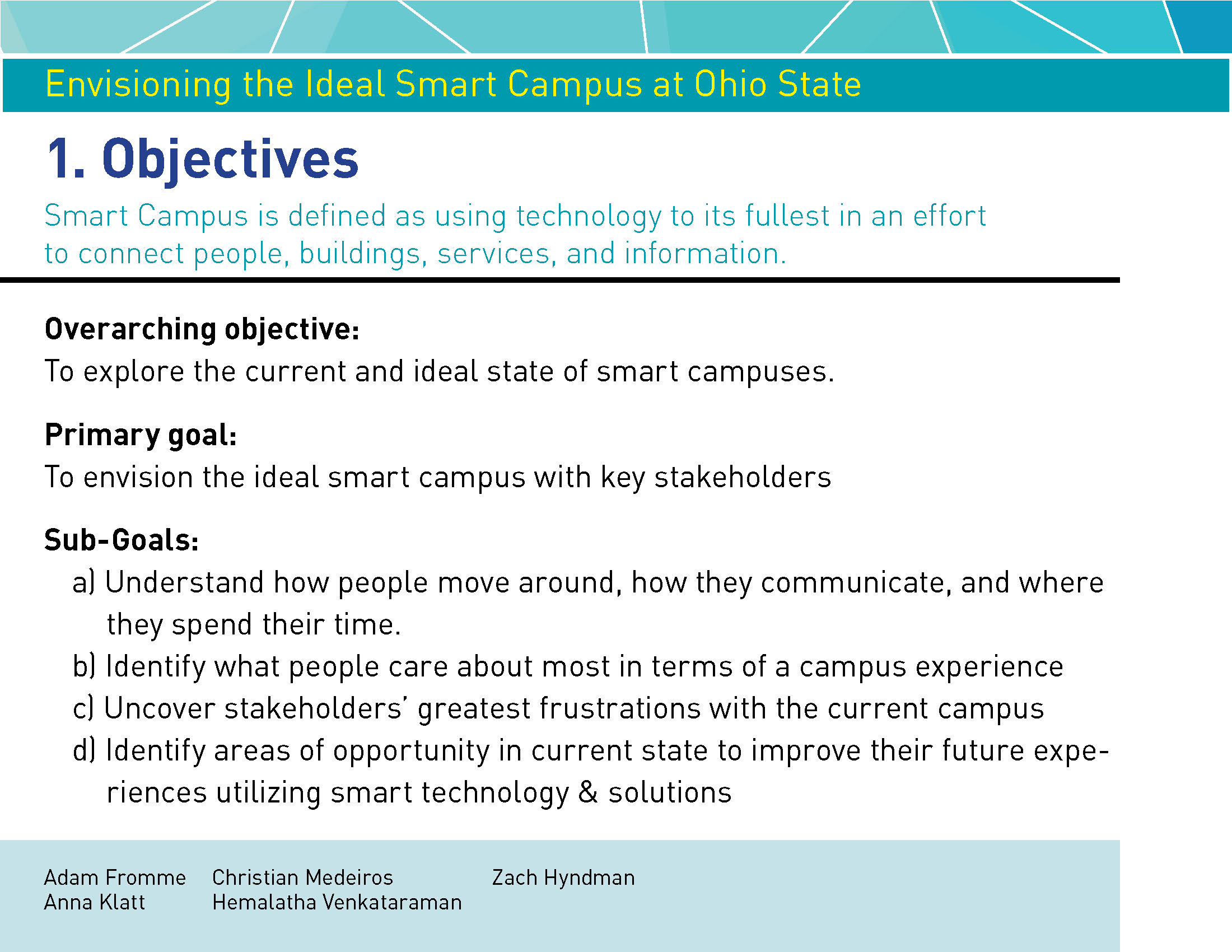
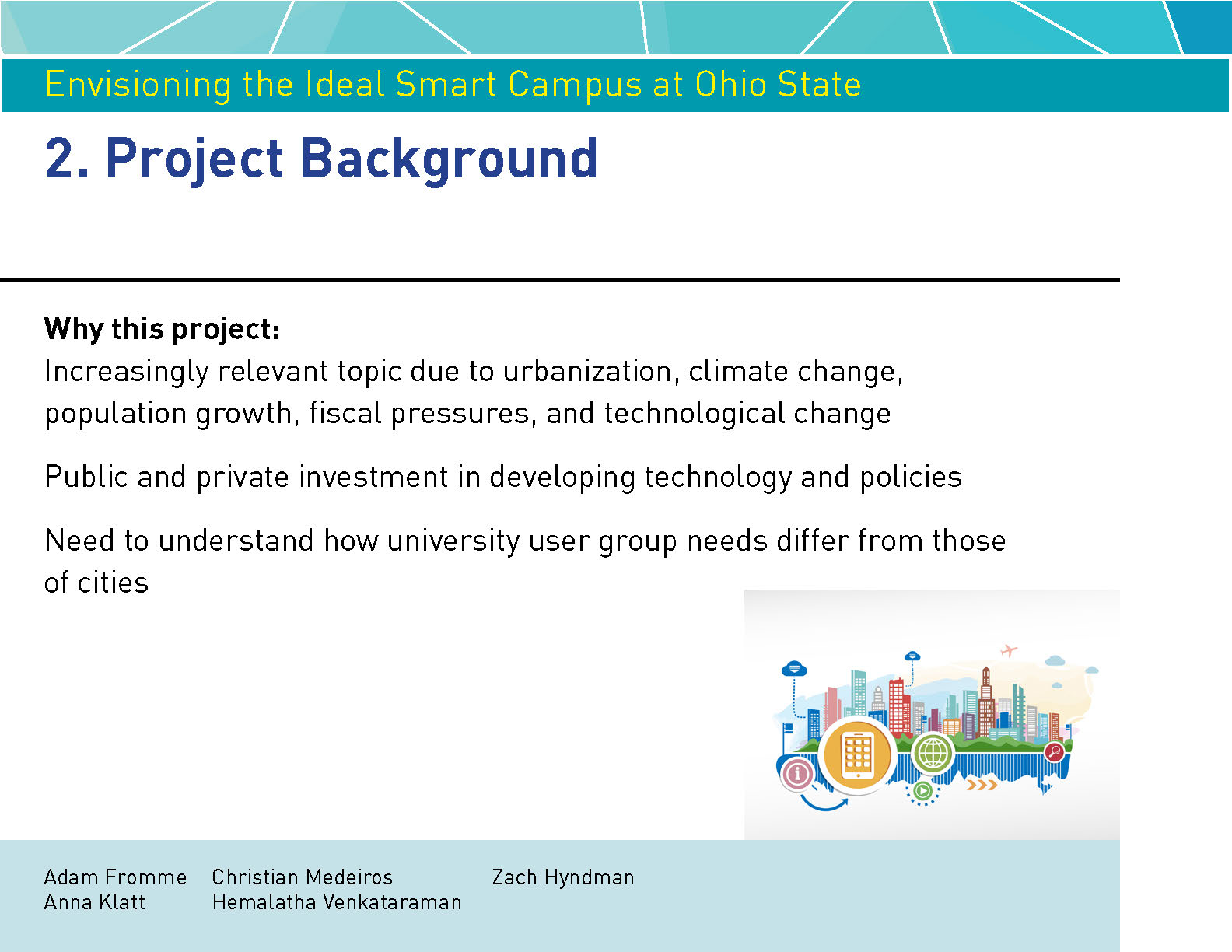
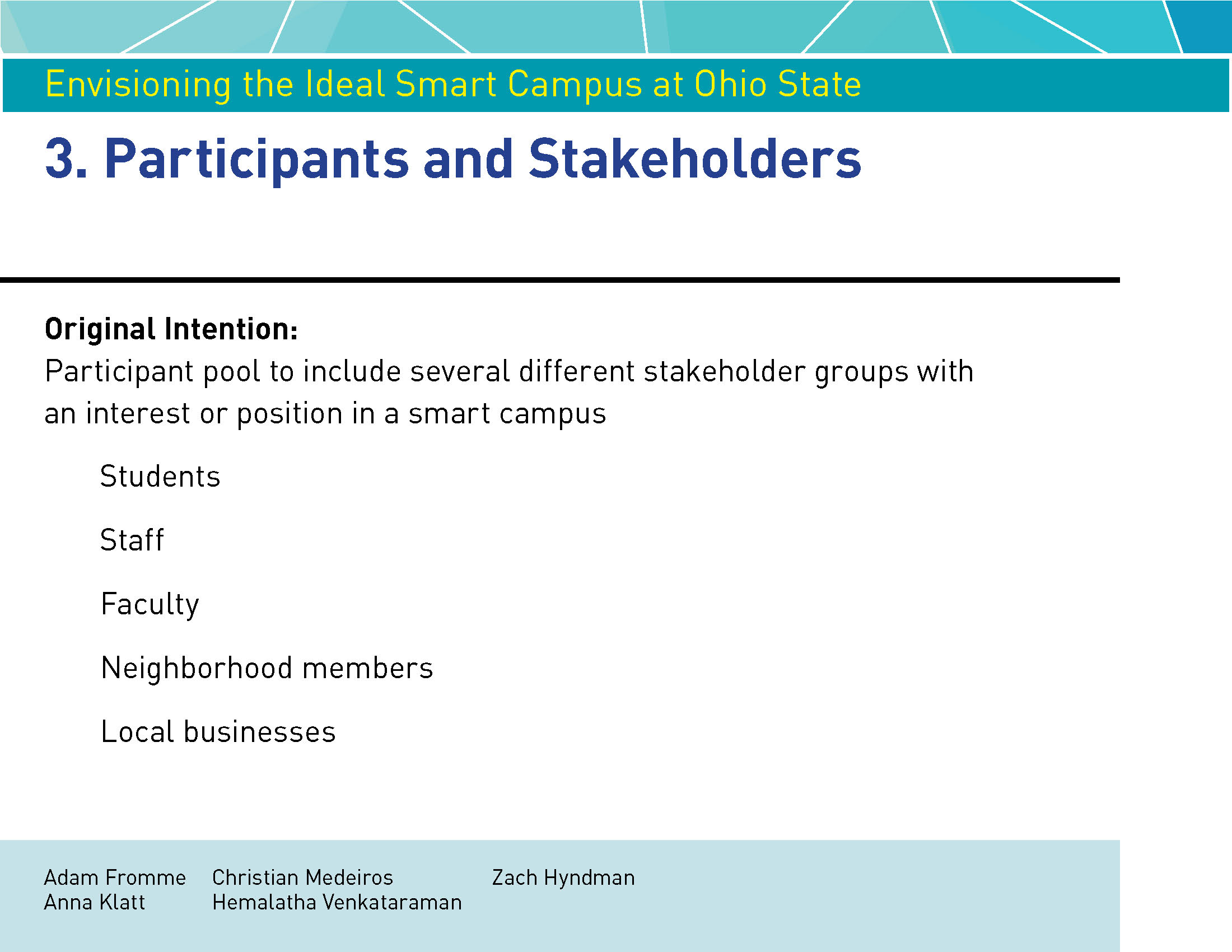
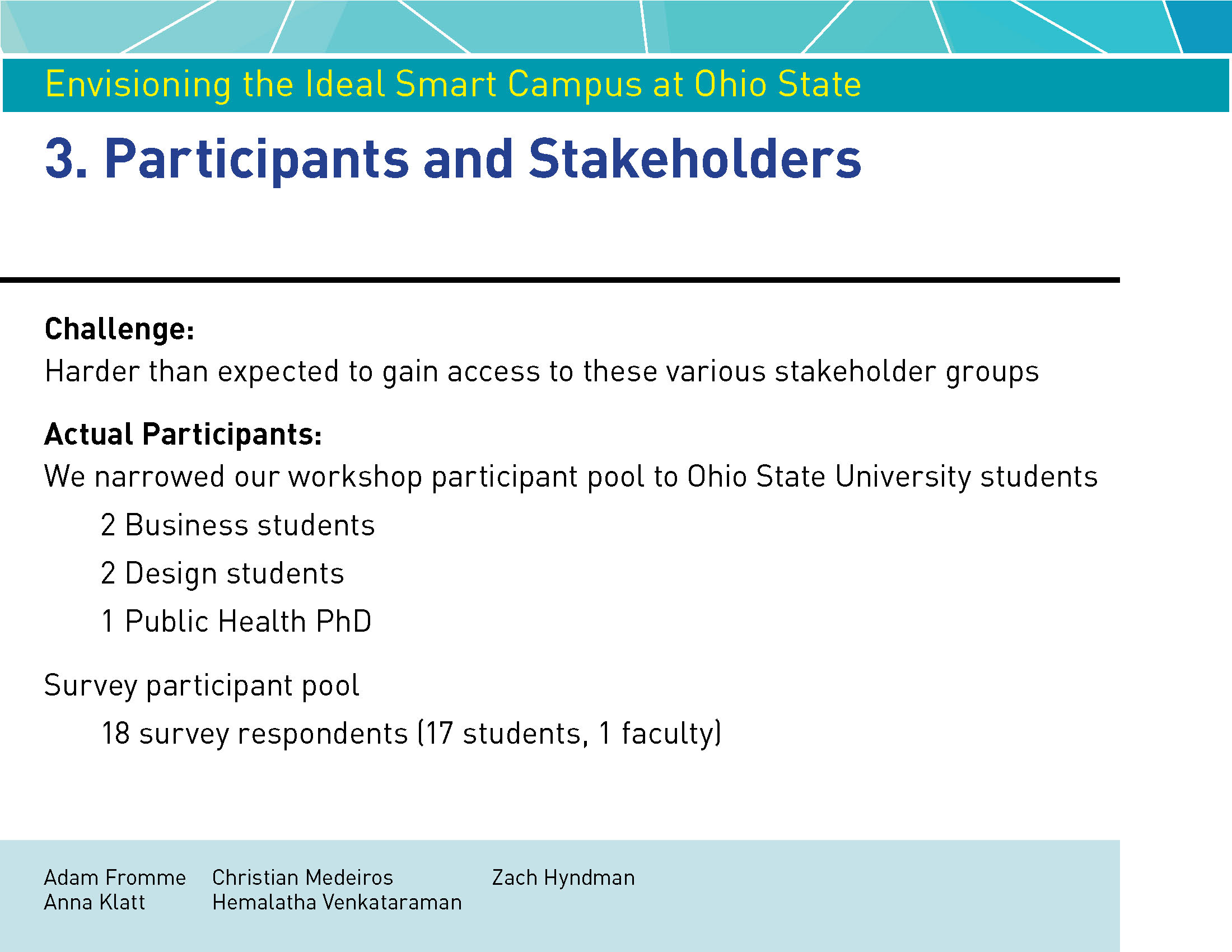
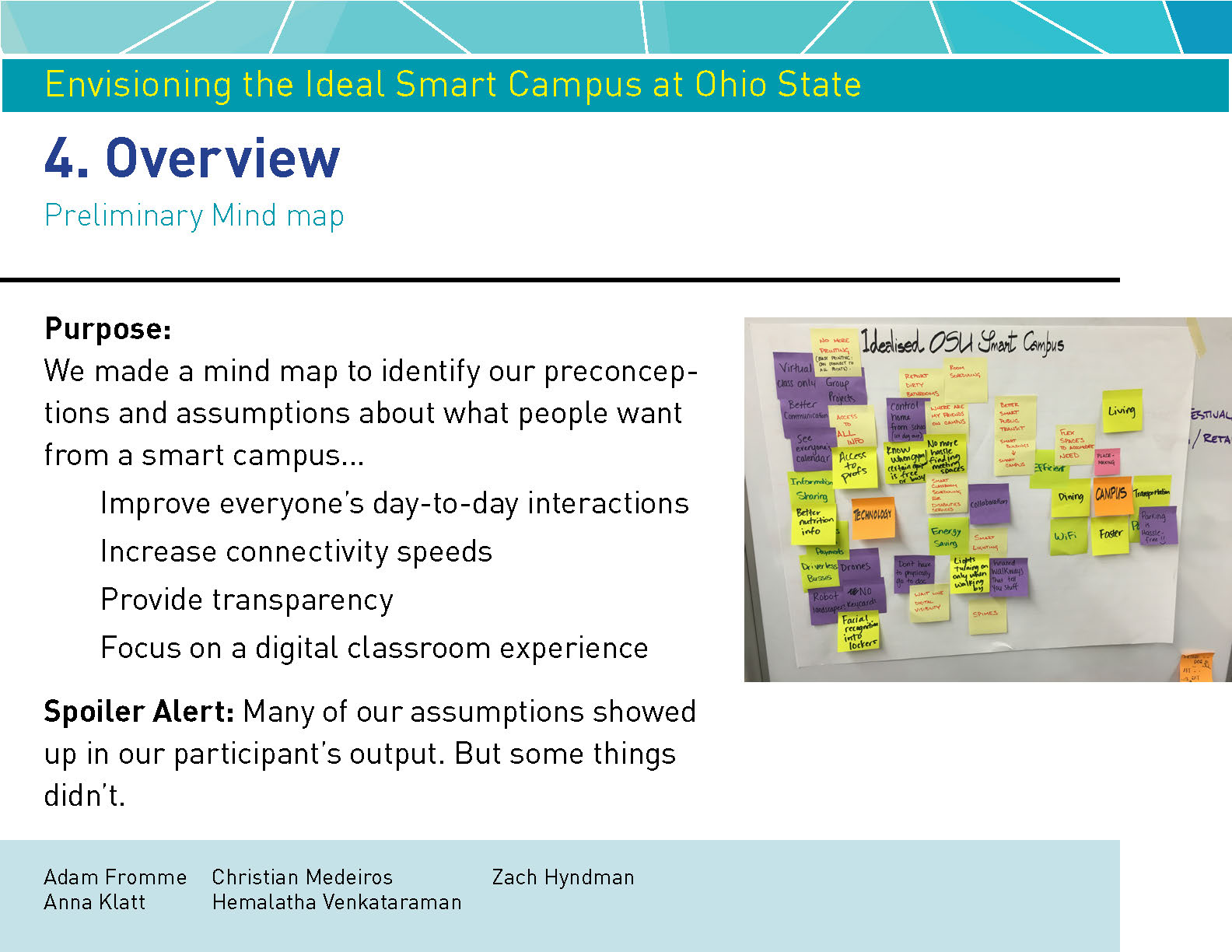

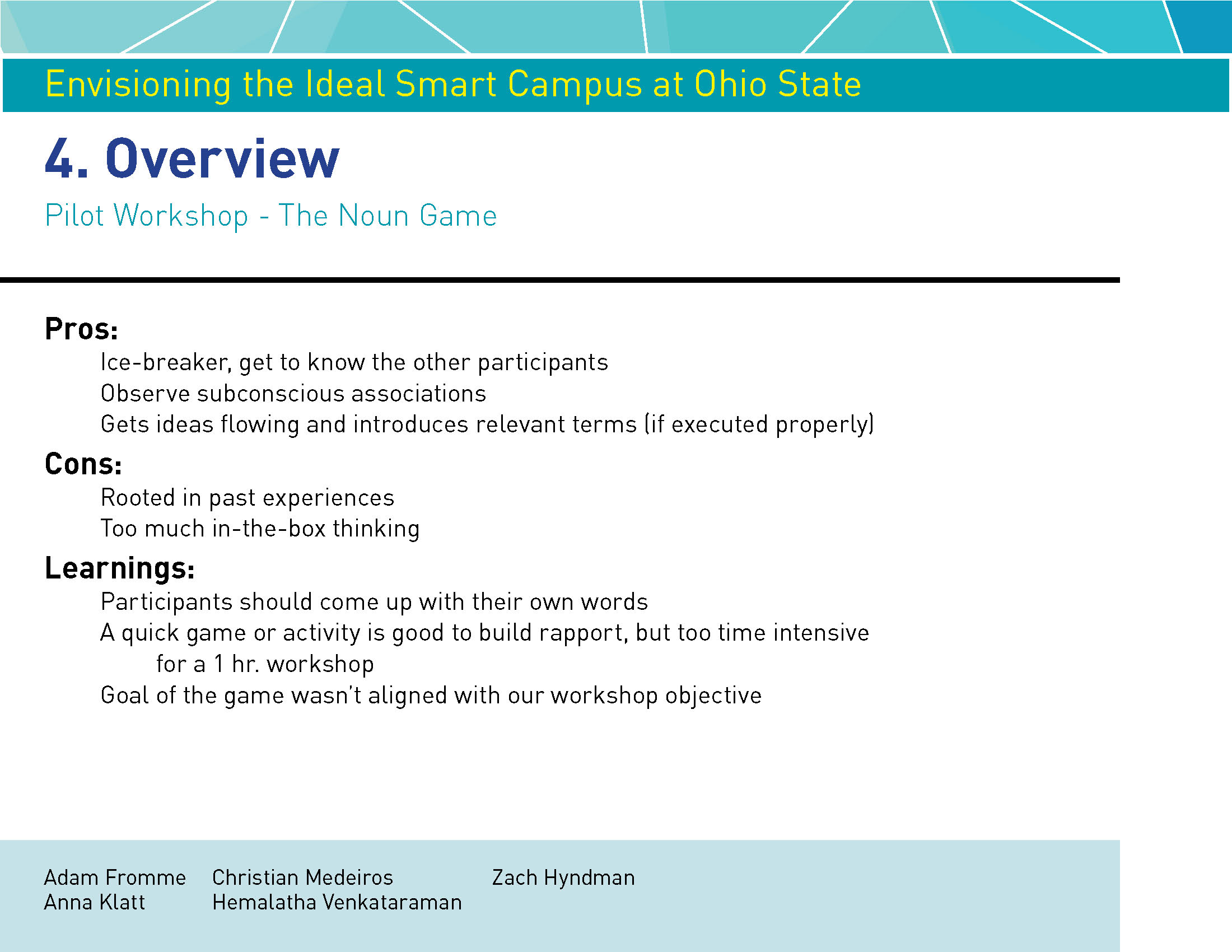
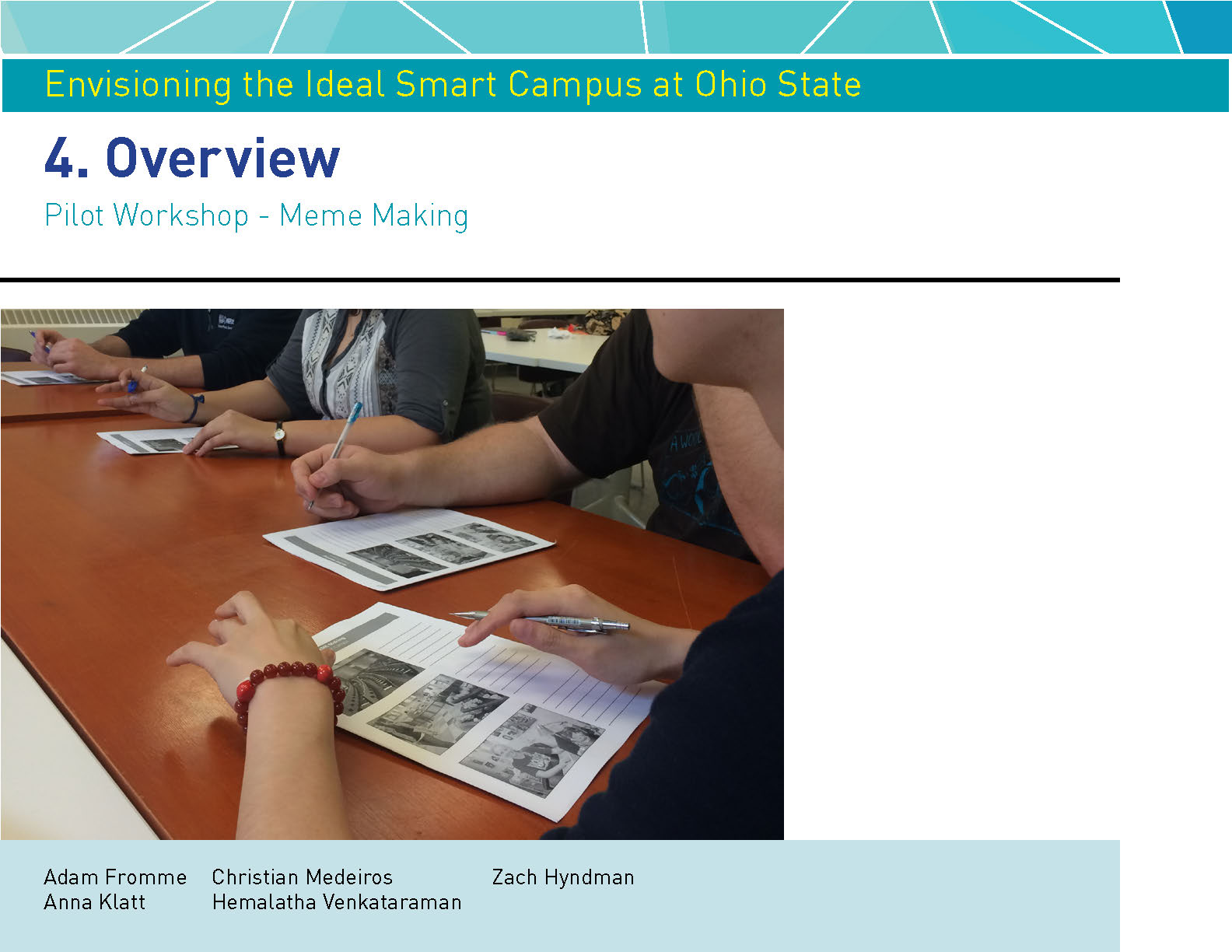
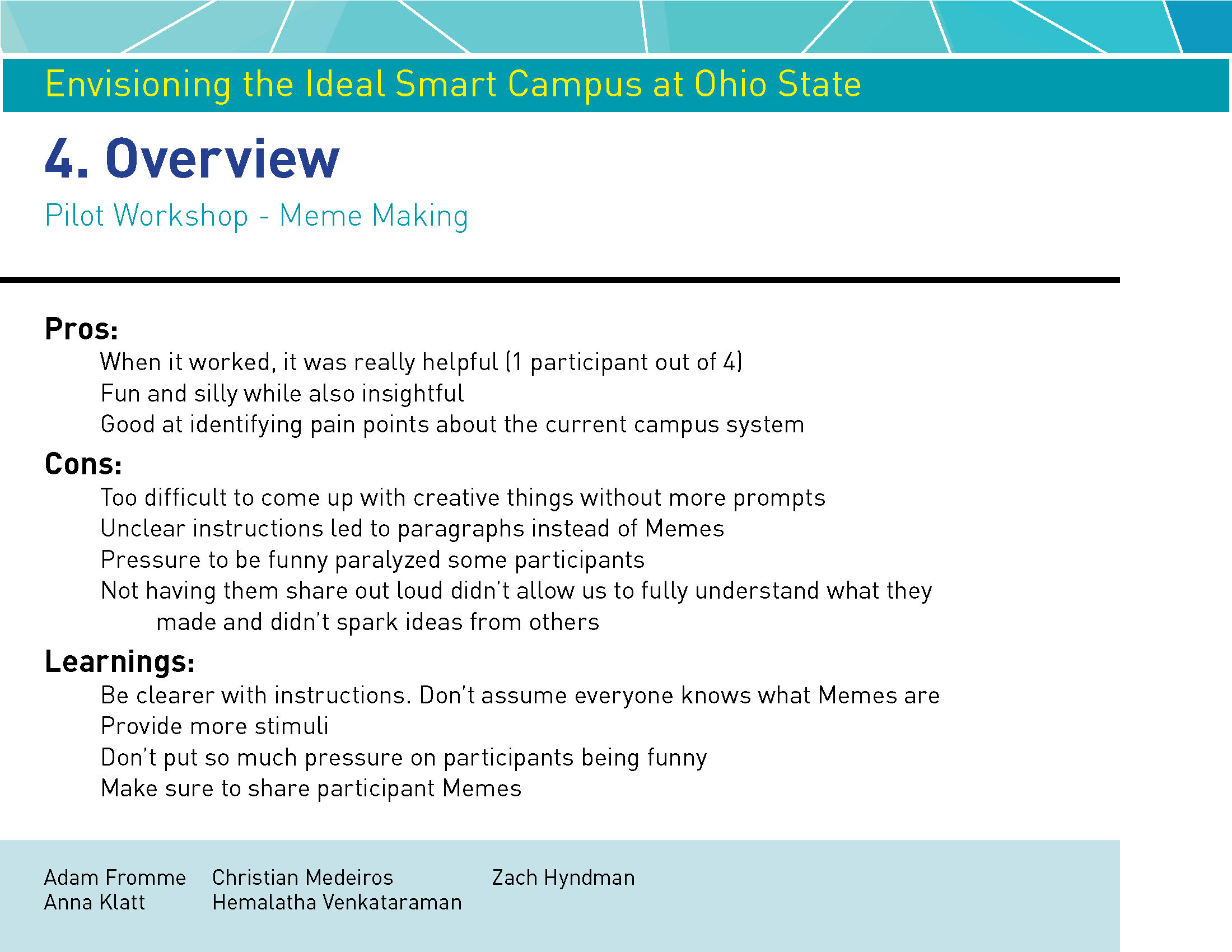
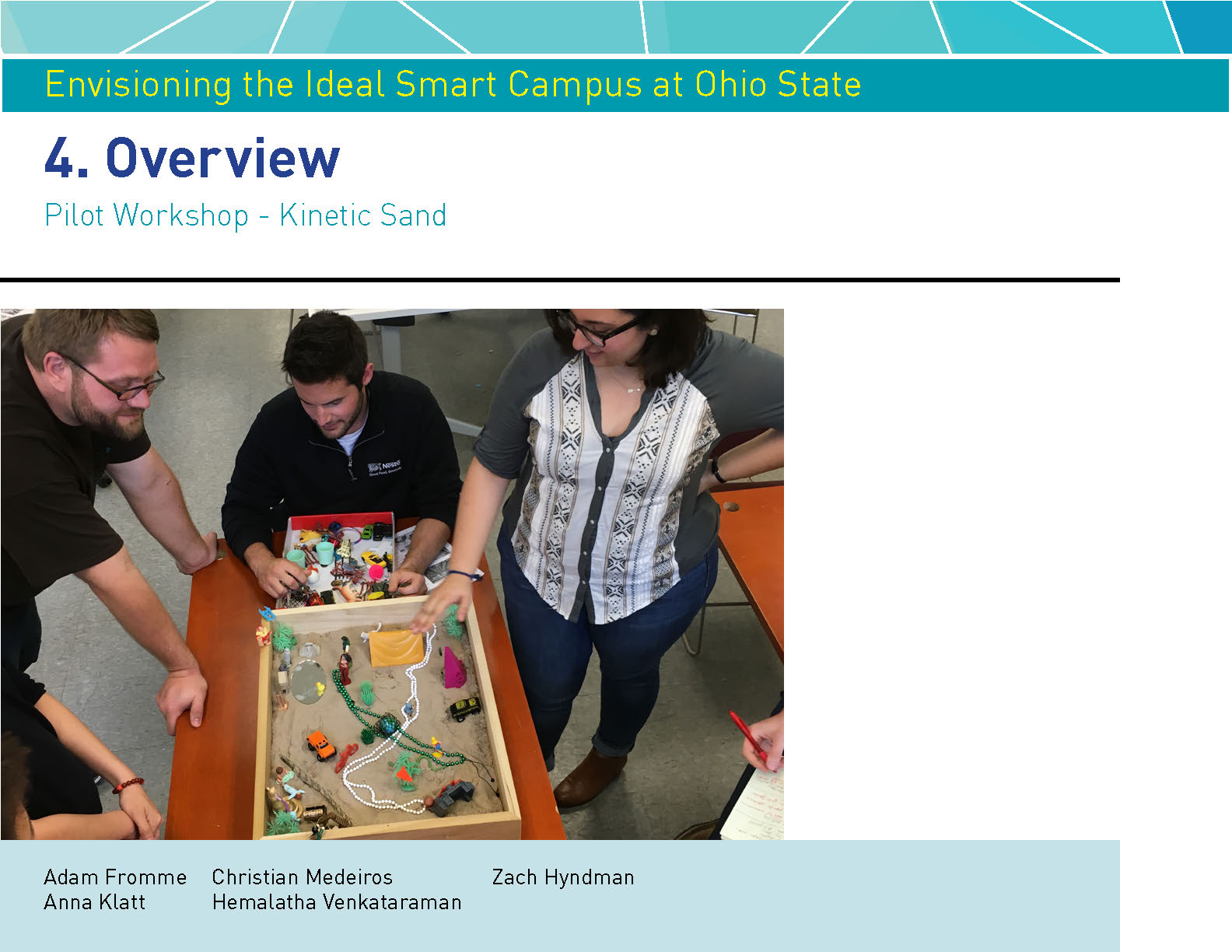
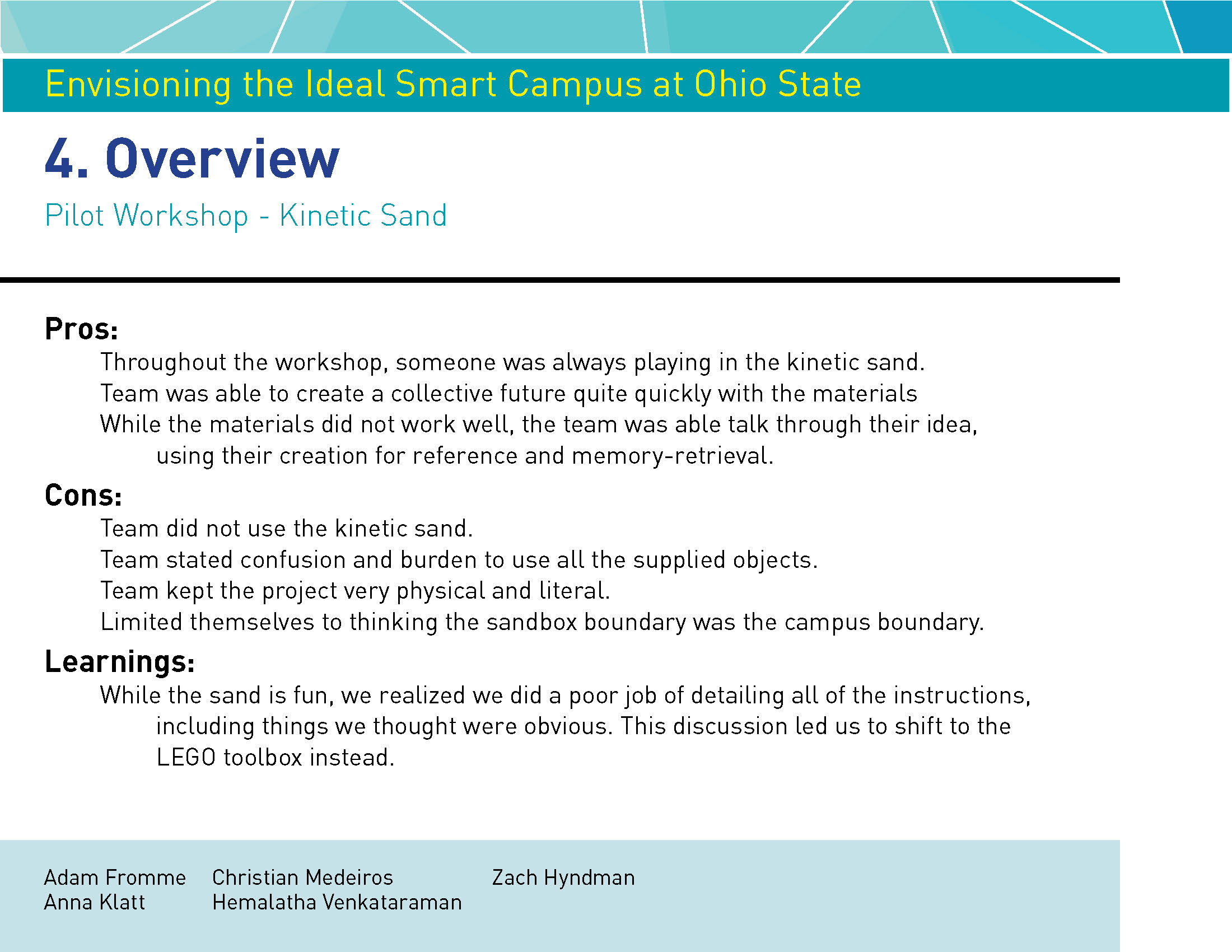
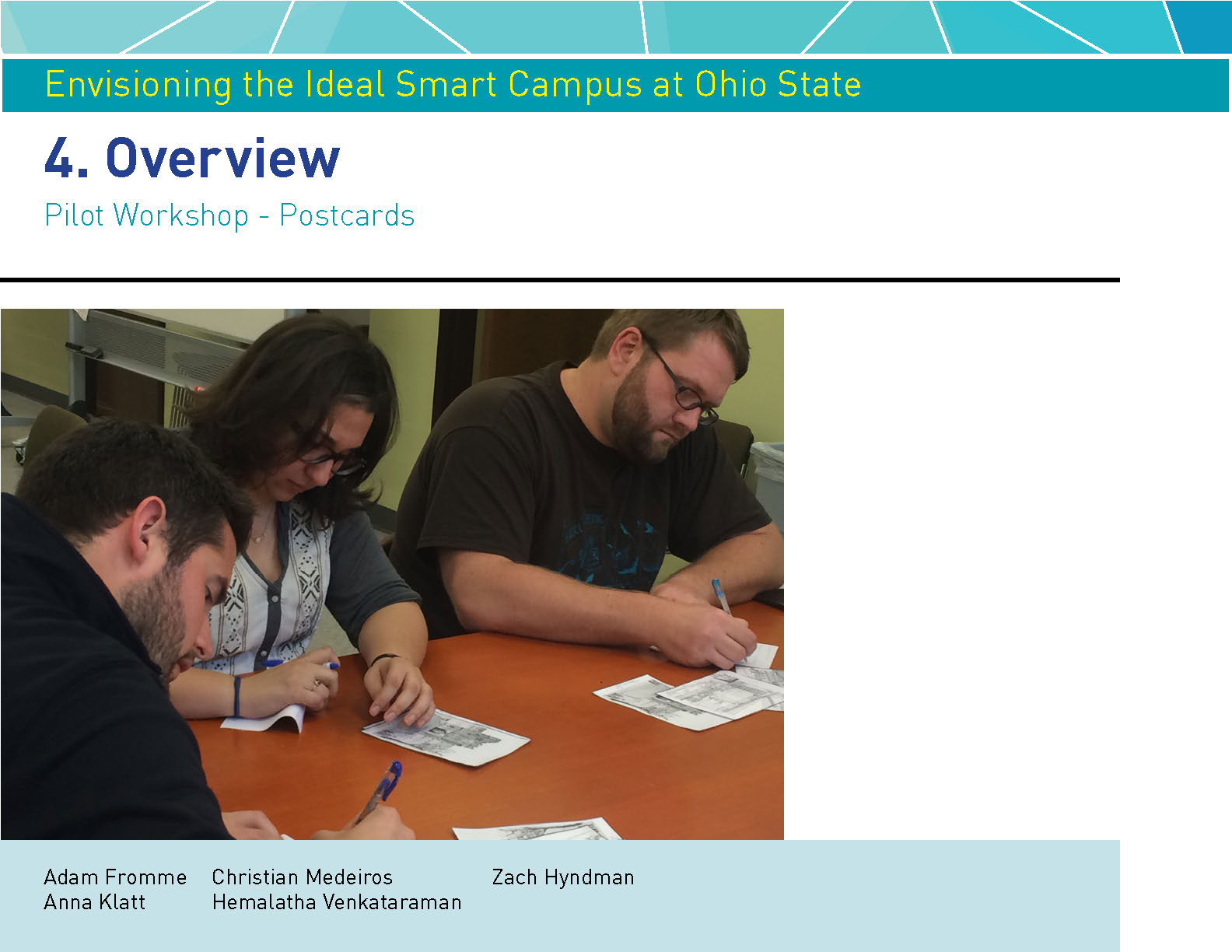
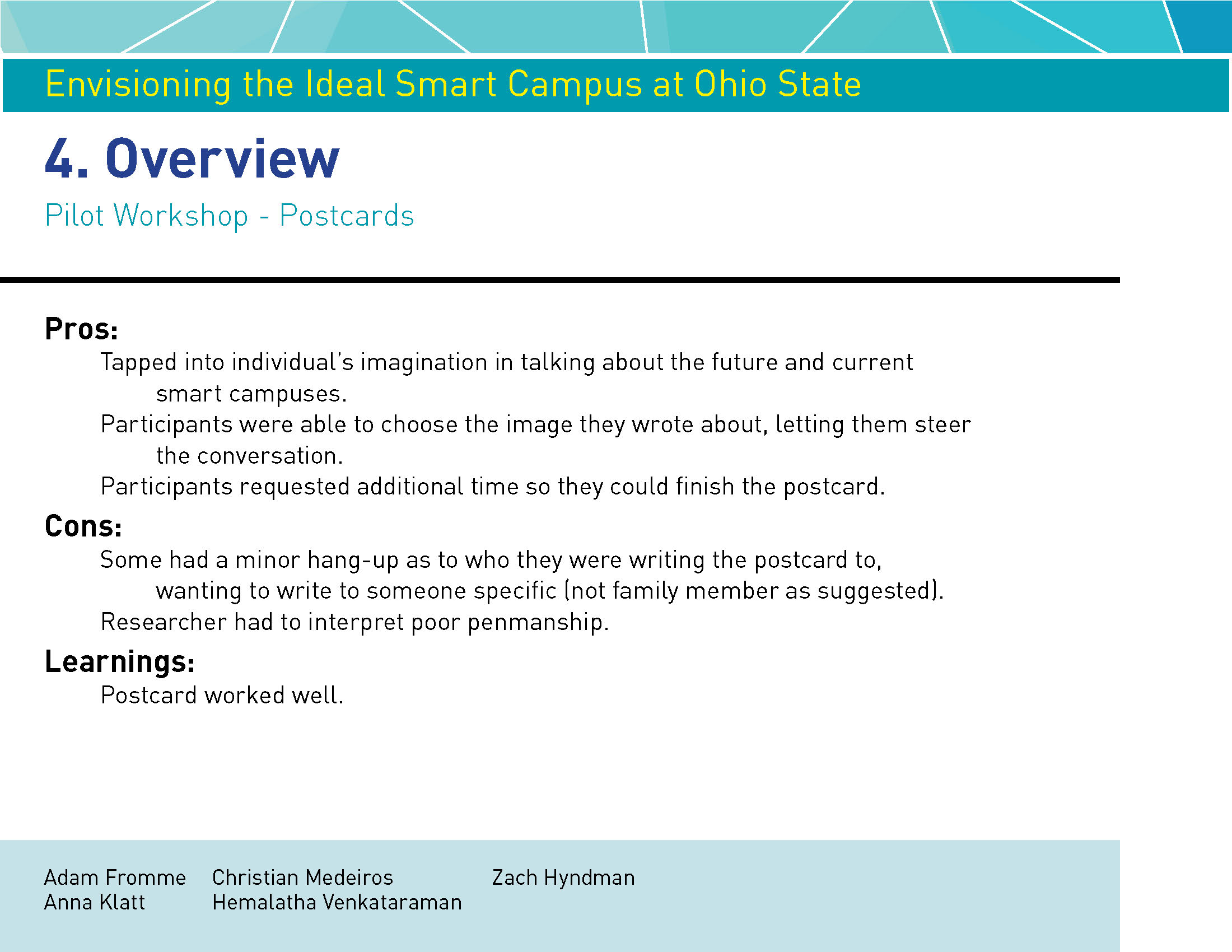
RECRUITING PARTICIPANTS AND A QUICK LOOK AT THE FINAL WORKSHOPS
Based on the learnings from the pilot workshops, we improved a few aspects for the final workshops. The use of the kinetic sand toolkit was altogether changed to the use of lego blocks because the lego blocks helped build a good physical representation of a space. The kinetic sand only allowed for abstract ideas to manifest.
ANALYSIS PROCESS: AN OVERVIEW
In facilitating multi-layered workshops and surveys, we had a lot of data for analysis. This segment covers an overview of the analysis process. For this research, I explored a new form of note-taking : visual notating. It combines live-sketching the ongoing research process and capturing key moments through illustration and quick notes. It was largely successful and was helpful during the analysis phase.
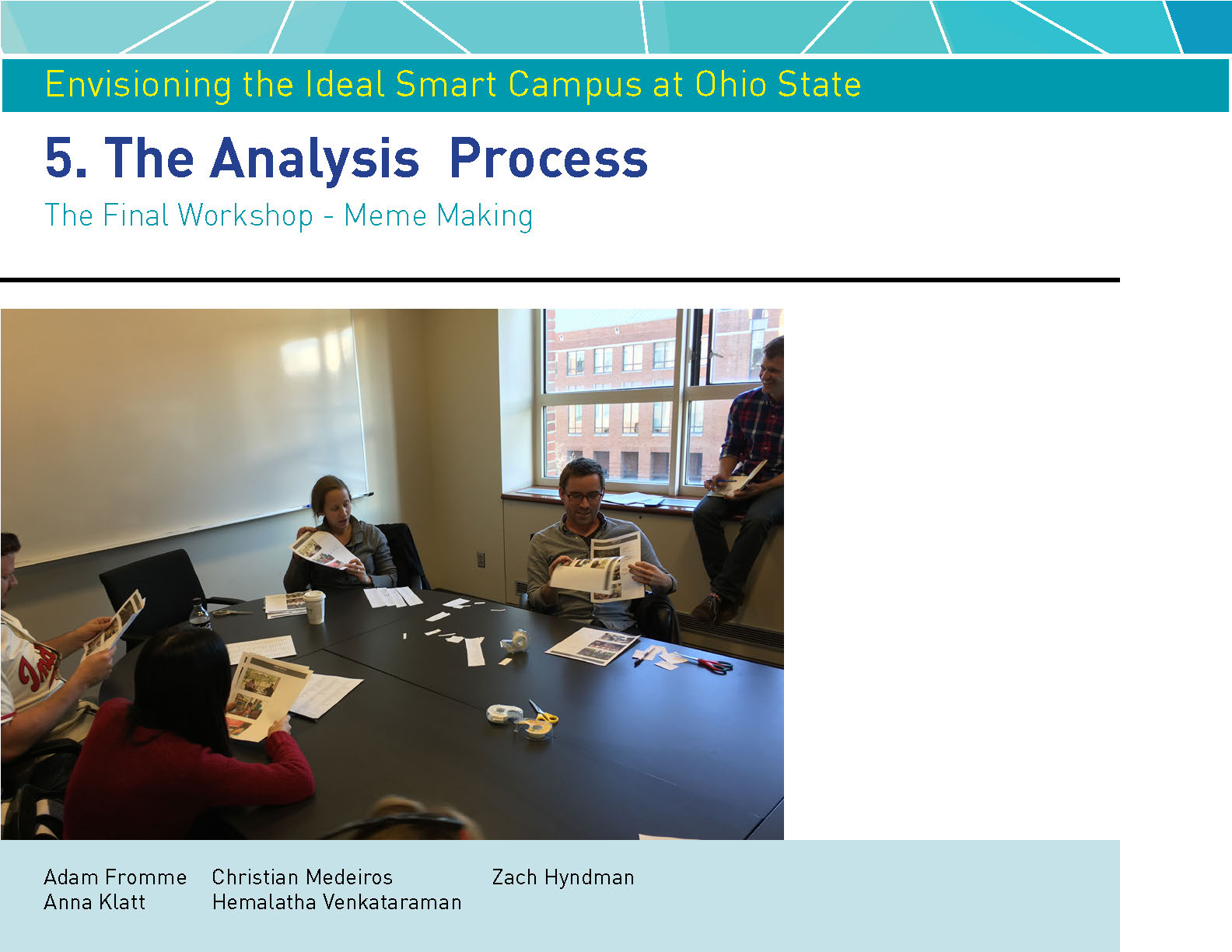
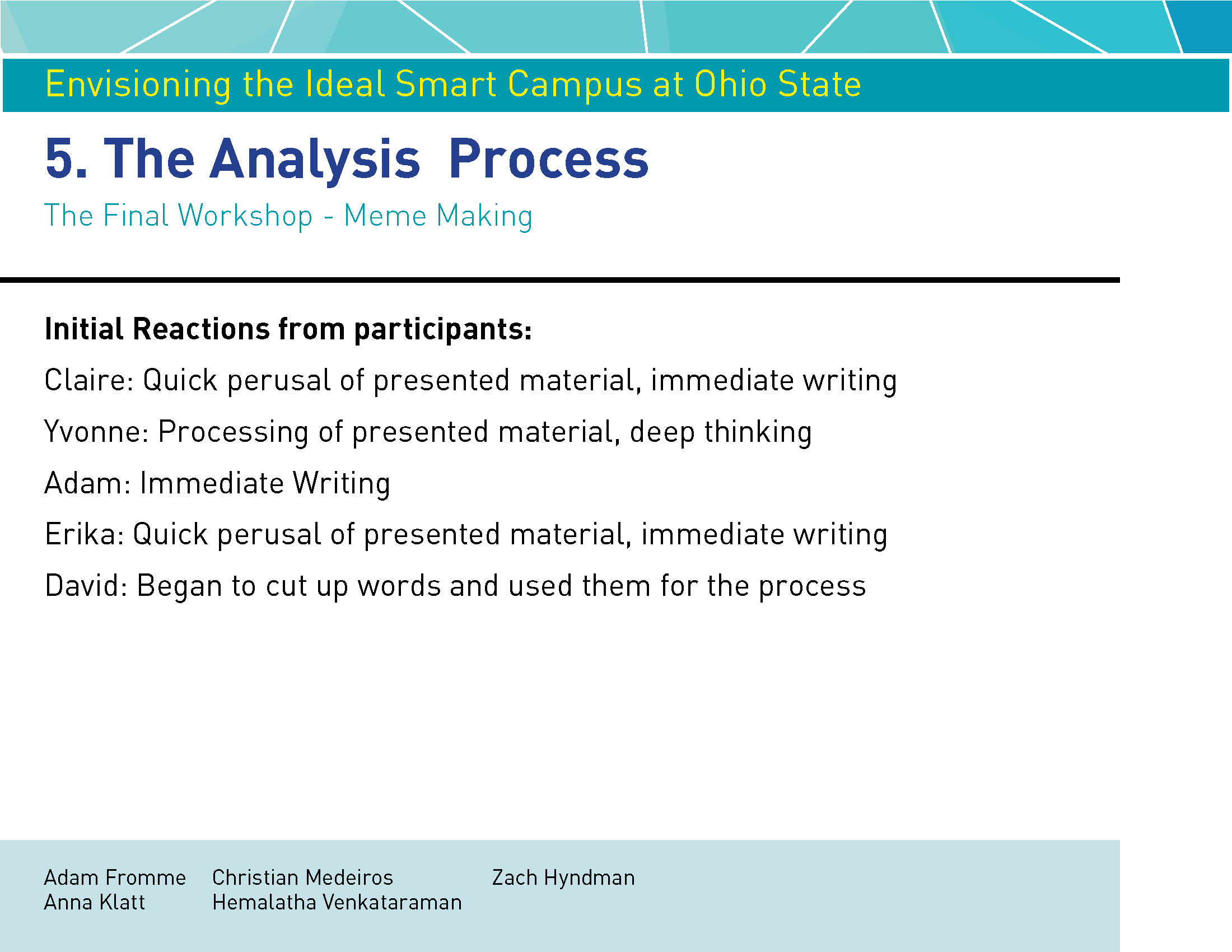
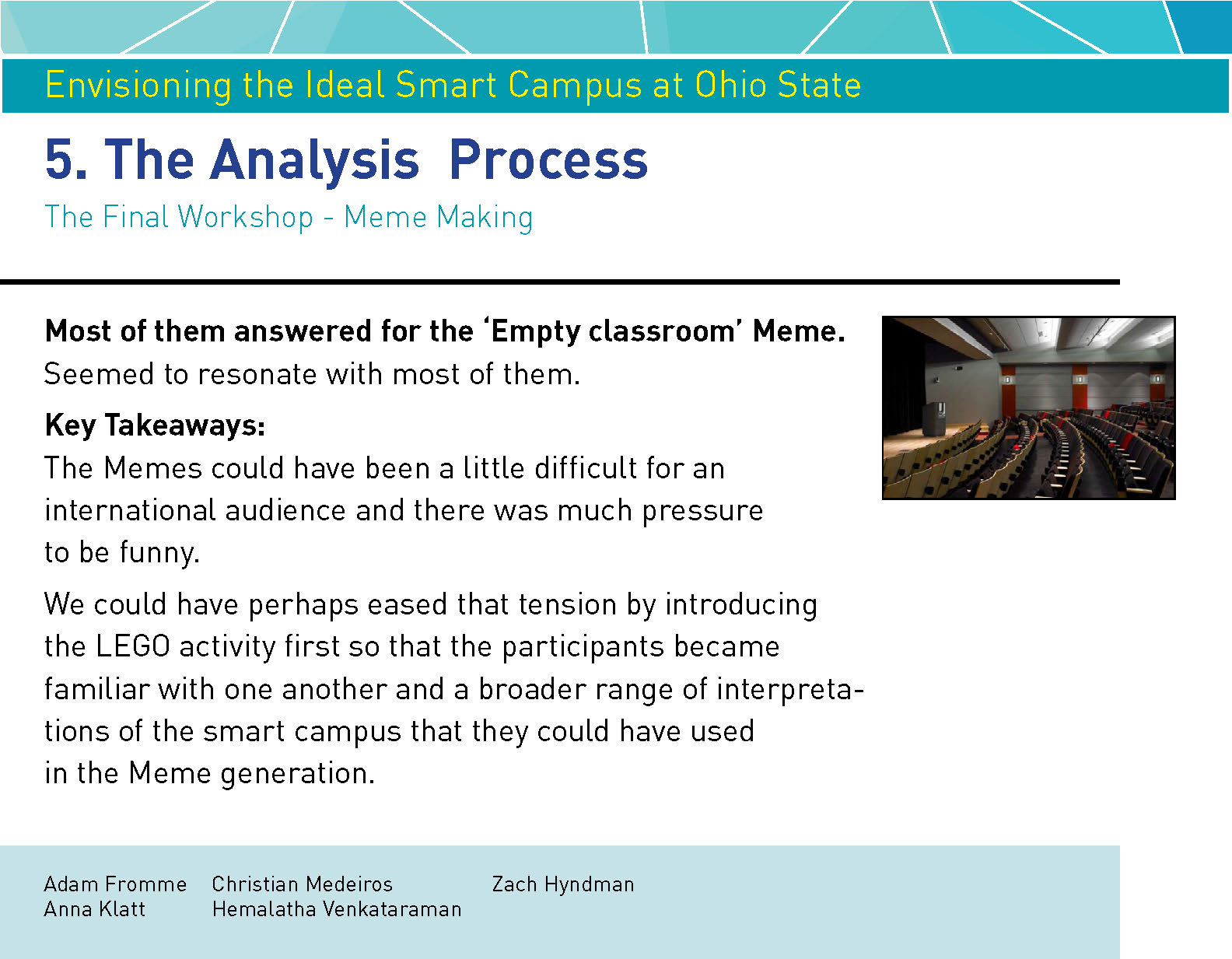
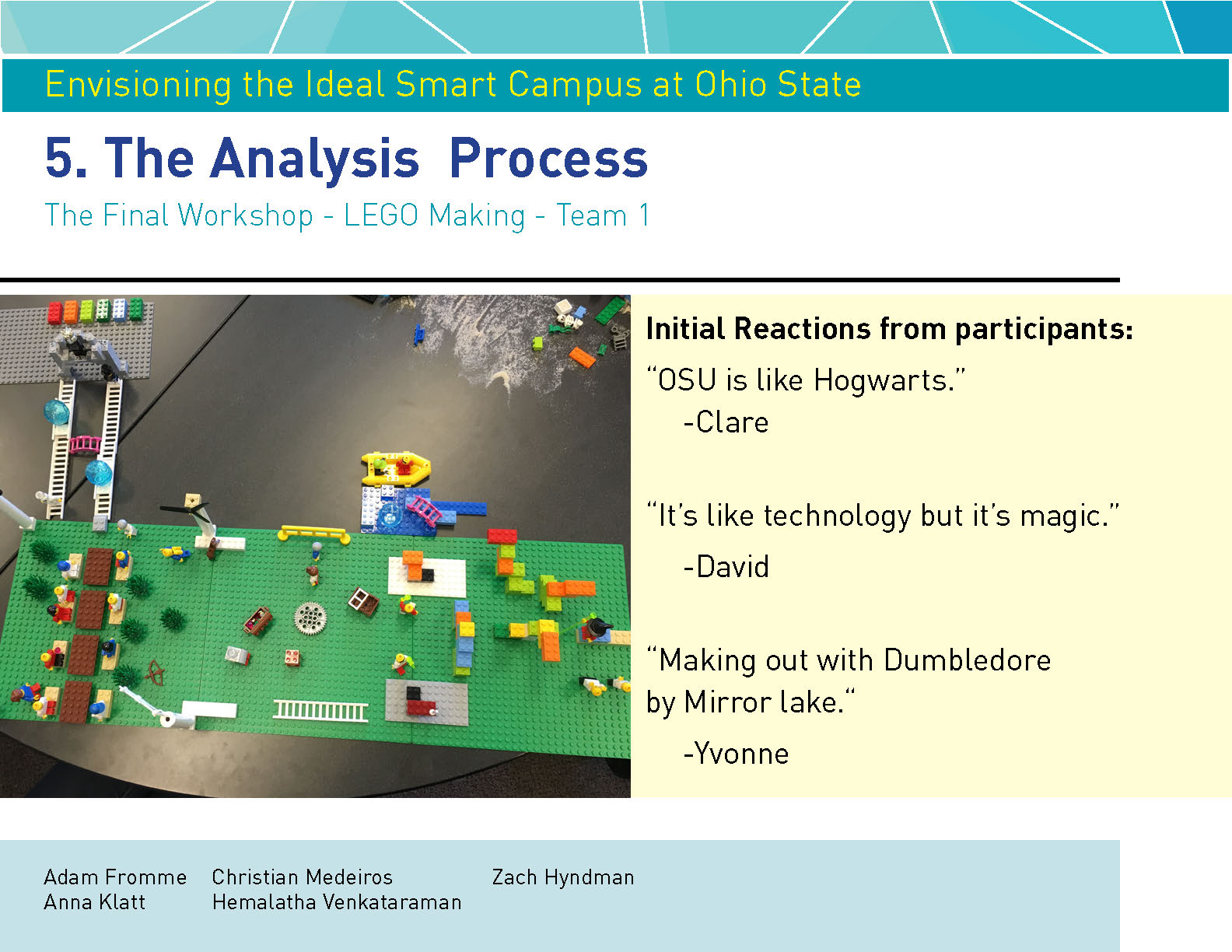
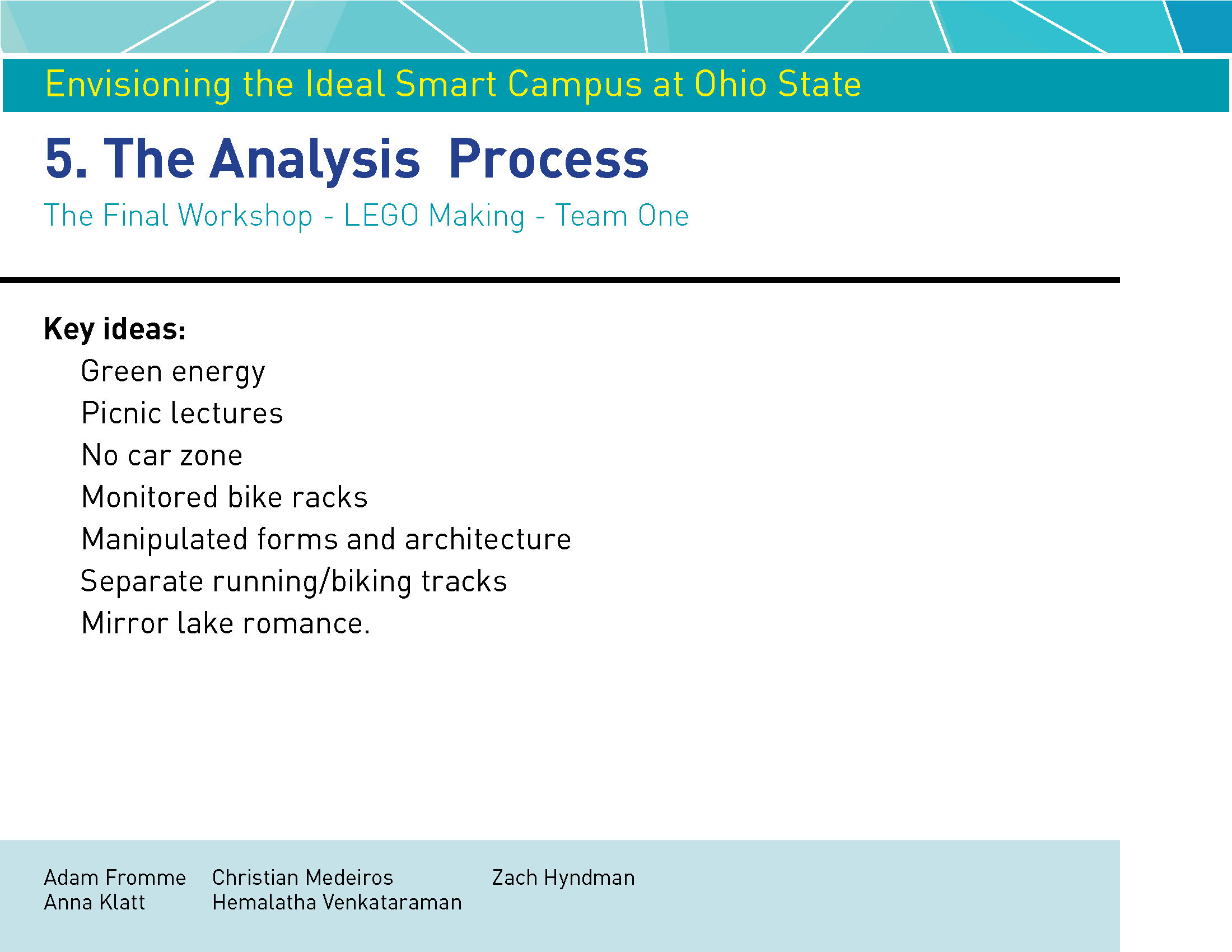
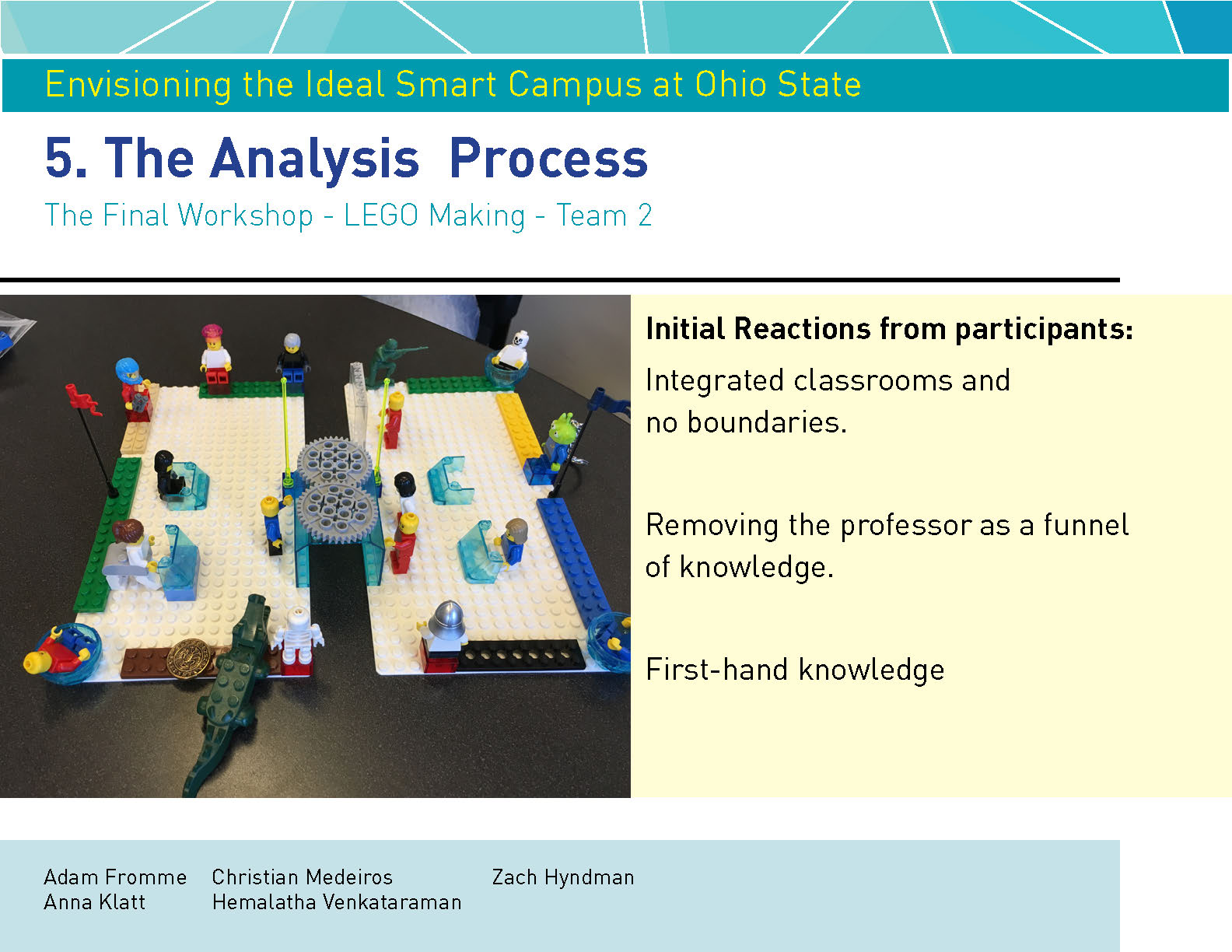
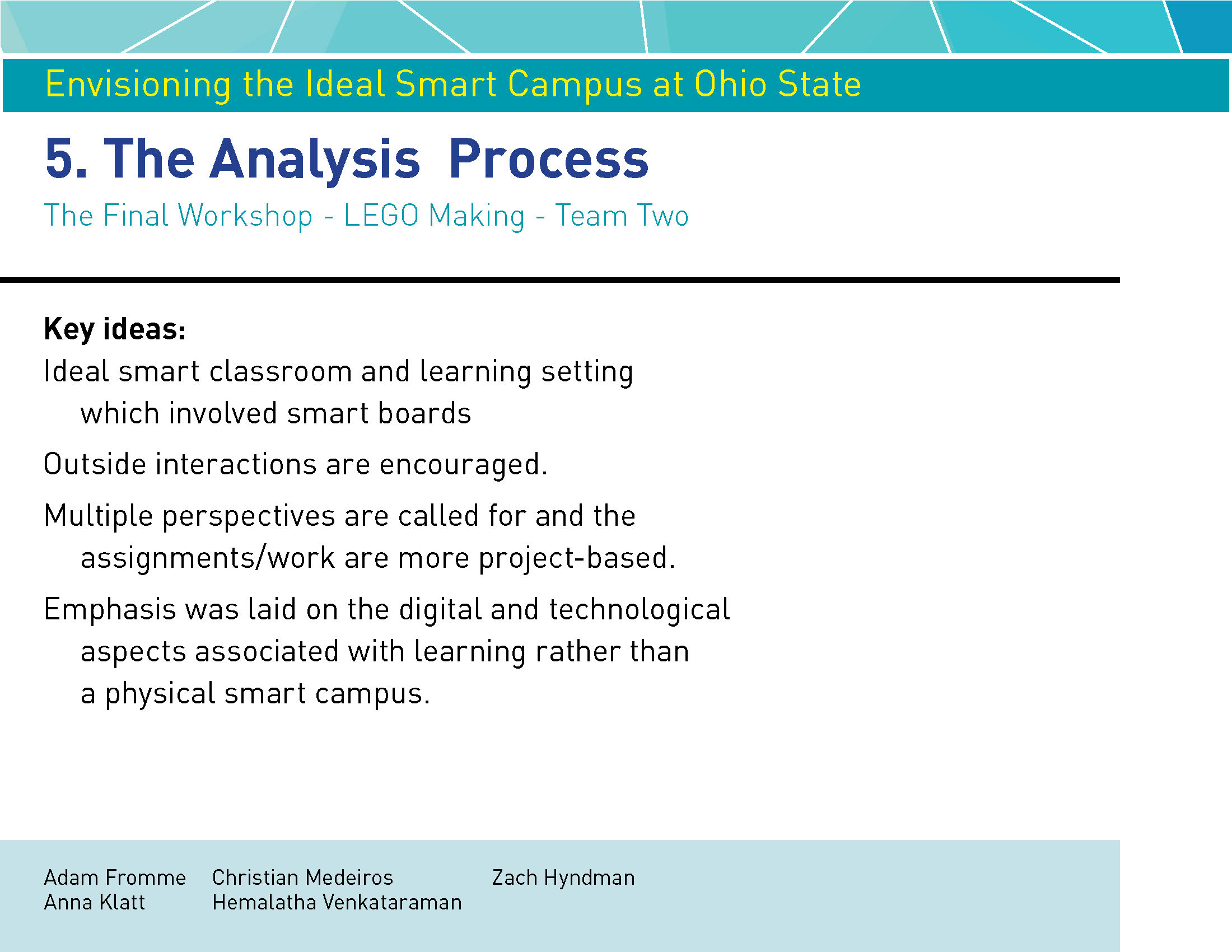
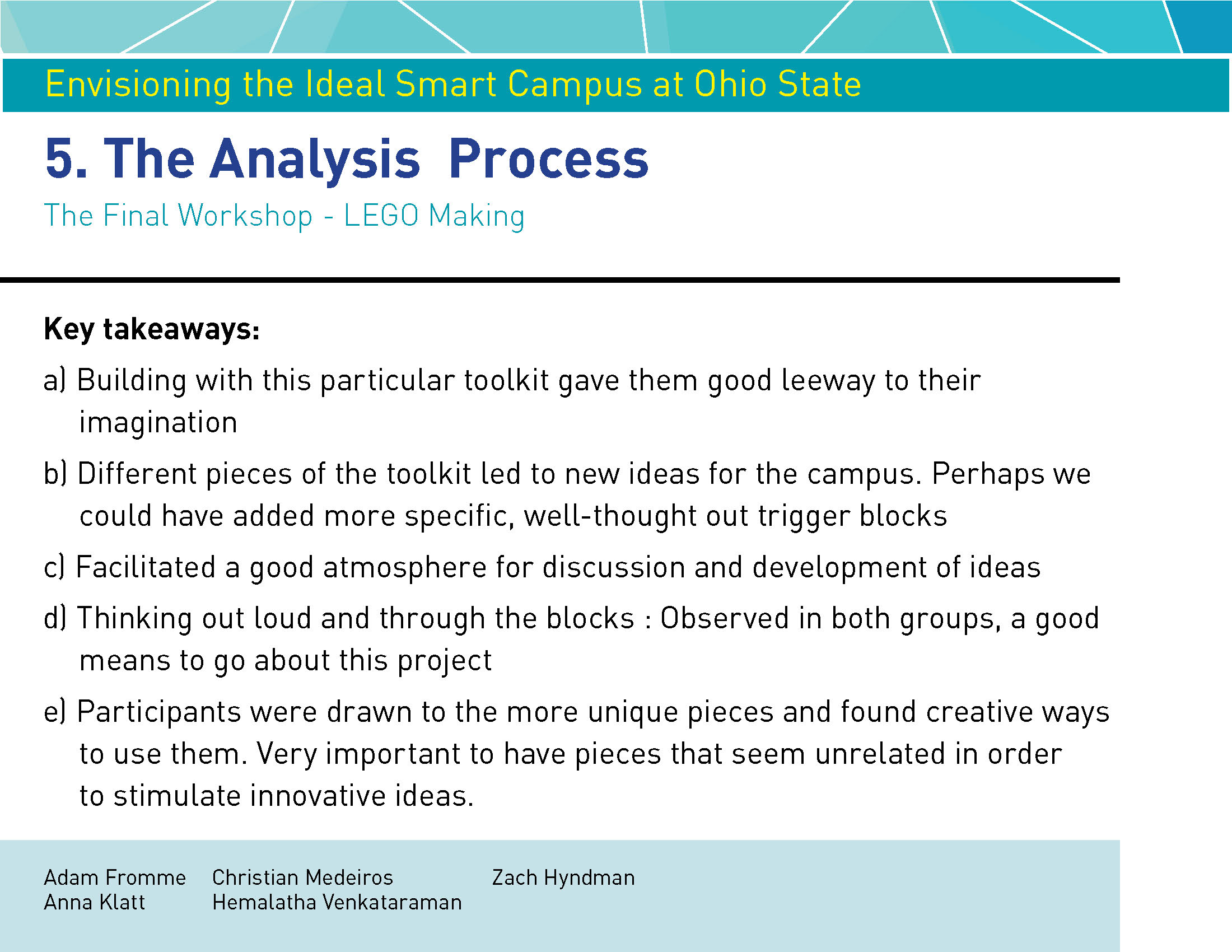
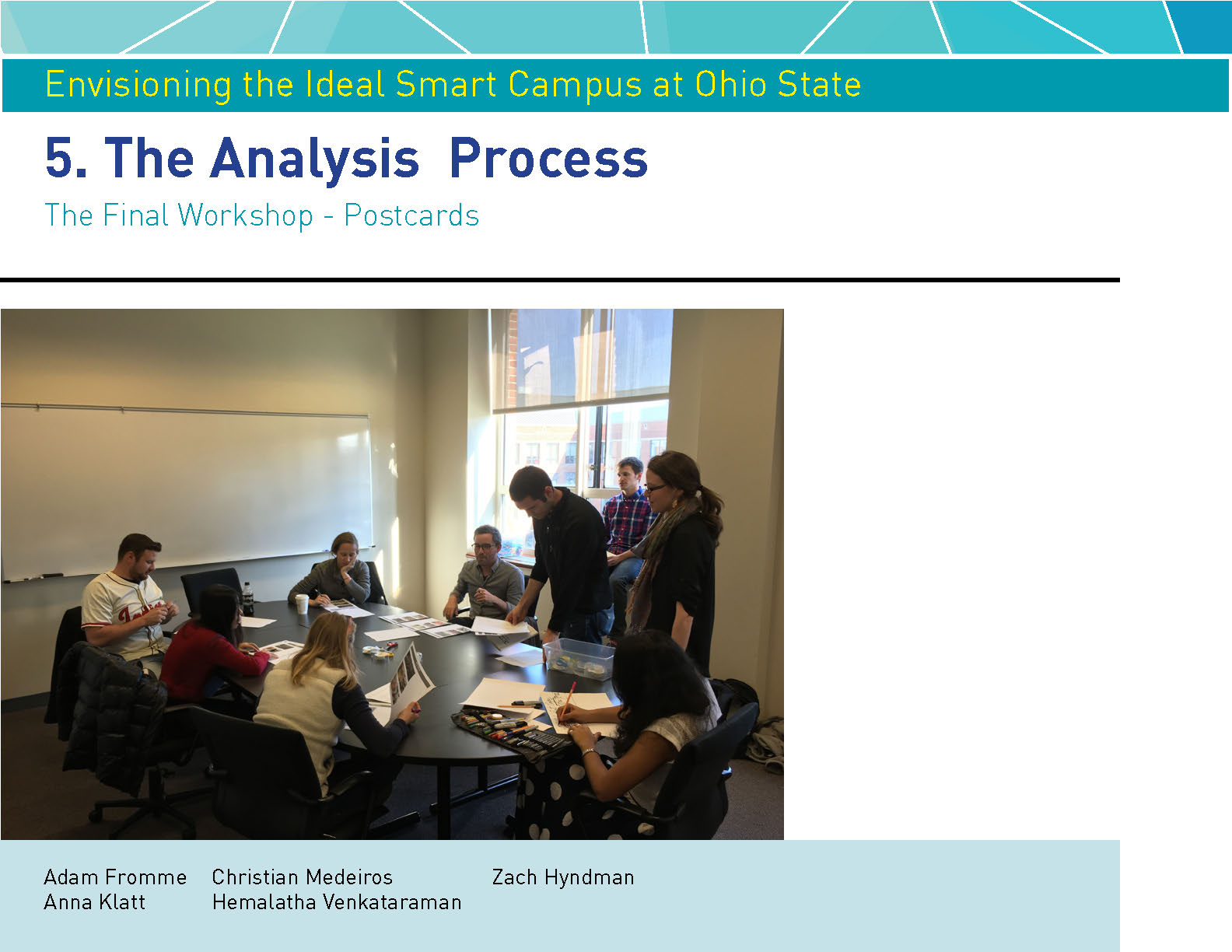

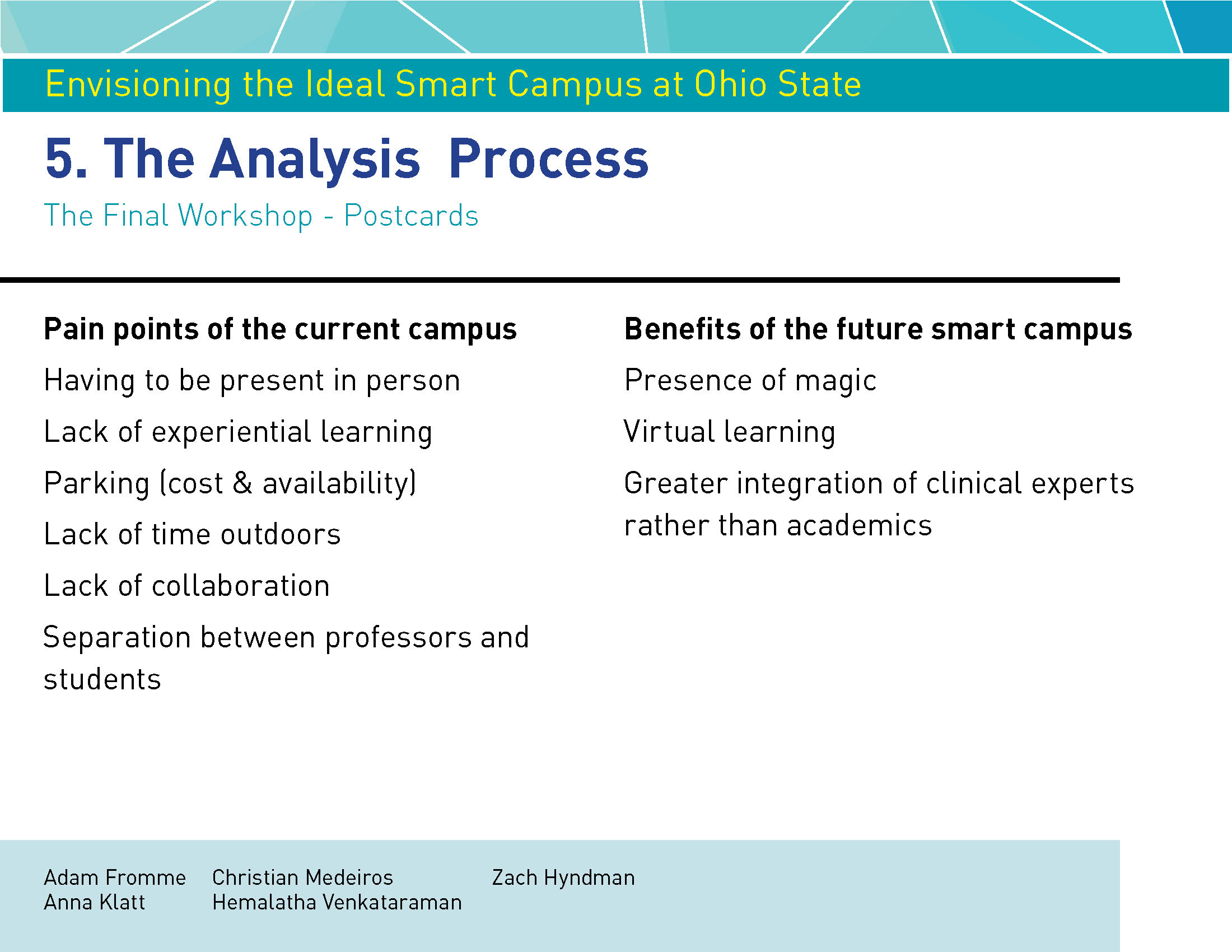
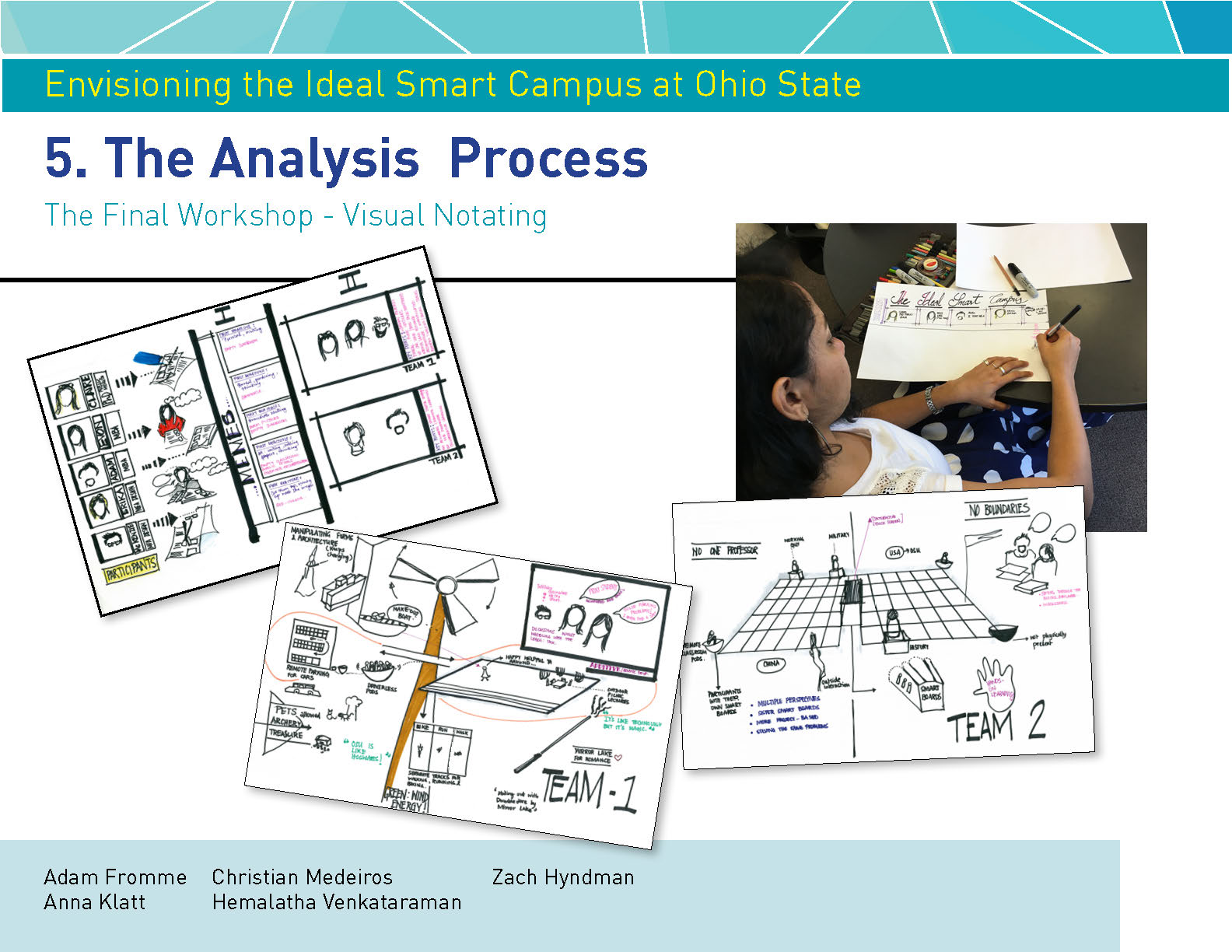
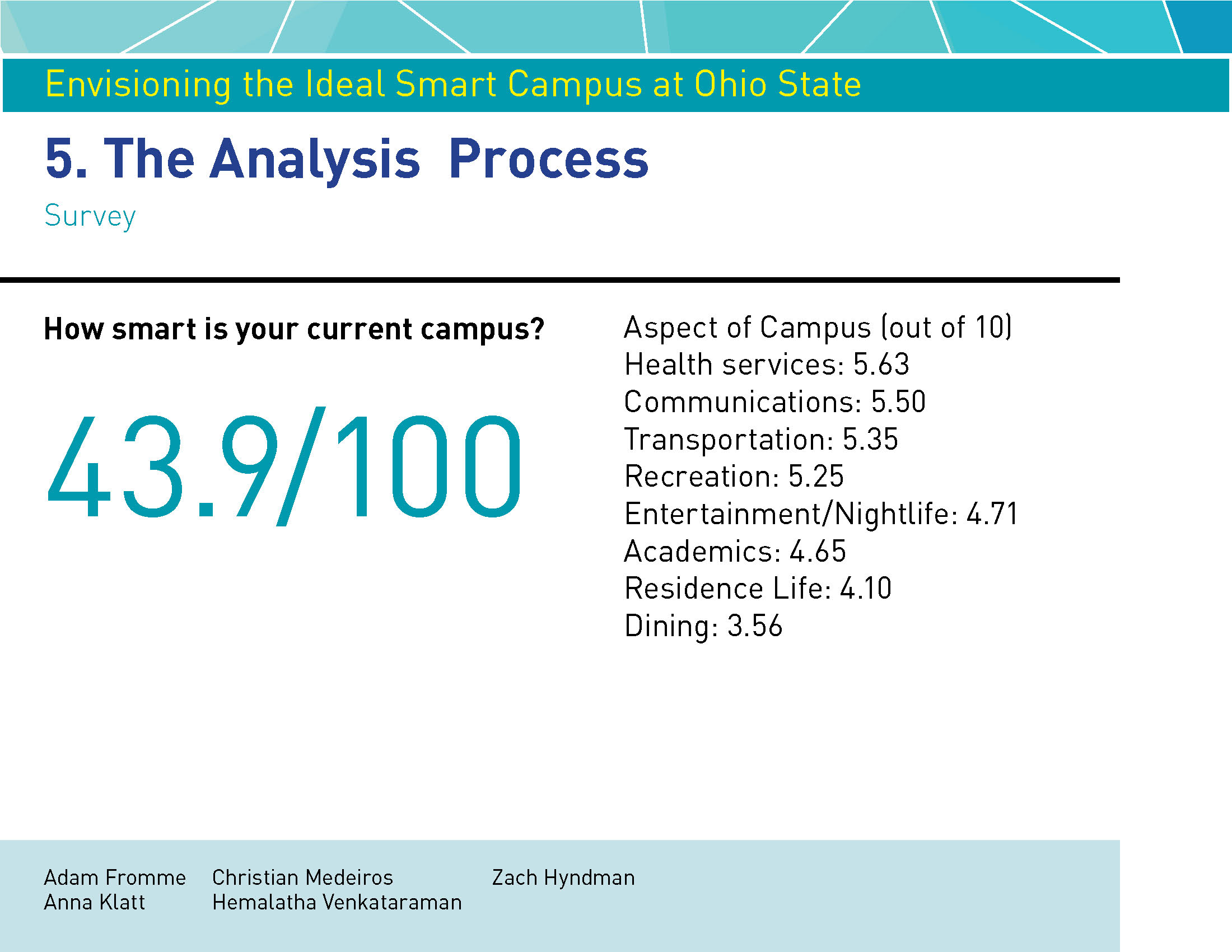
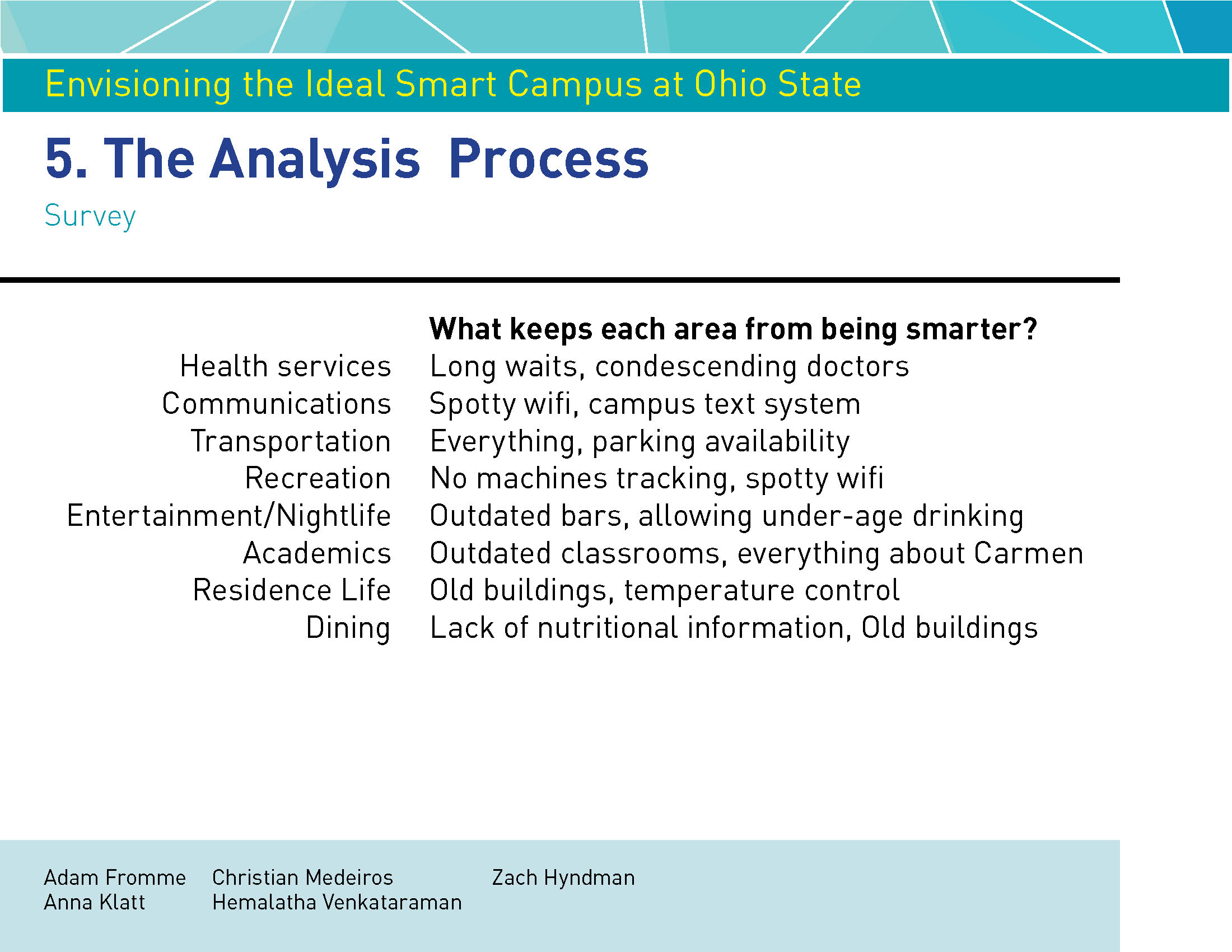

The visual notes:
LEARNINGS AND OUTCOMES
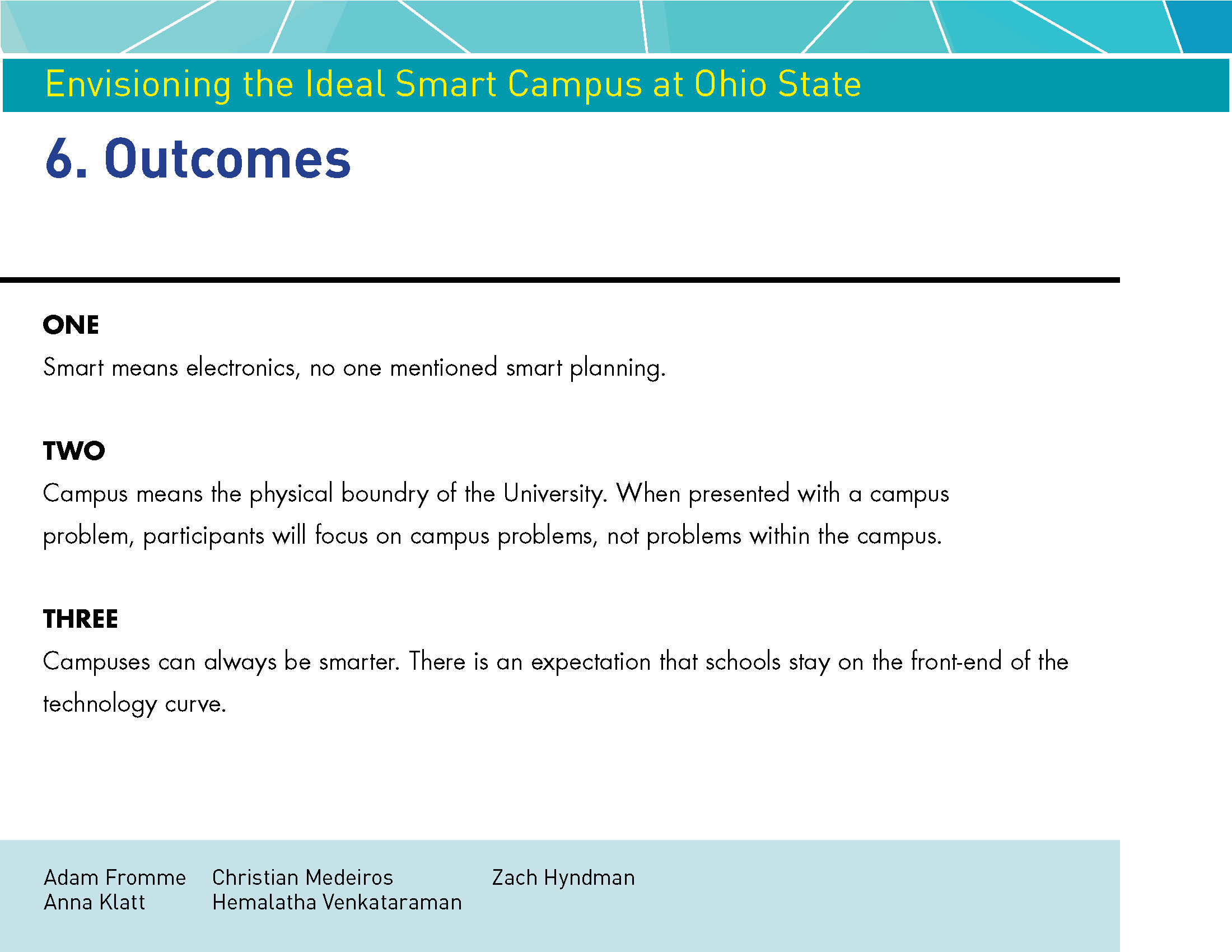
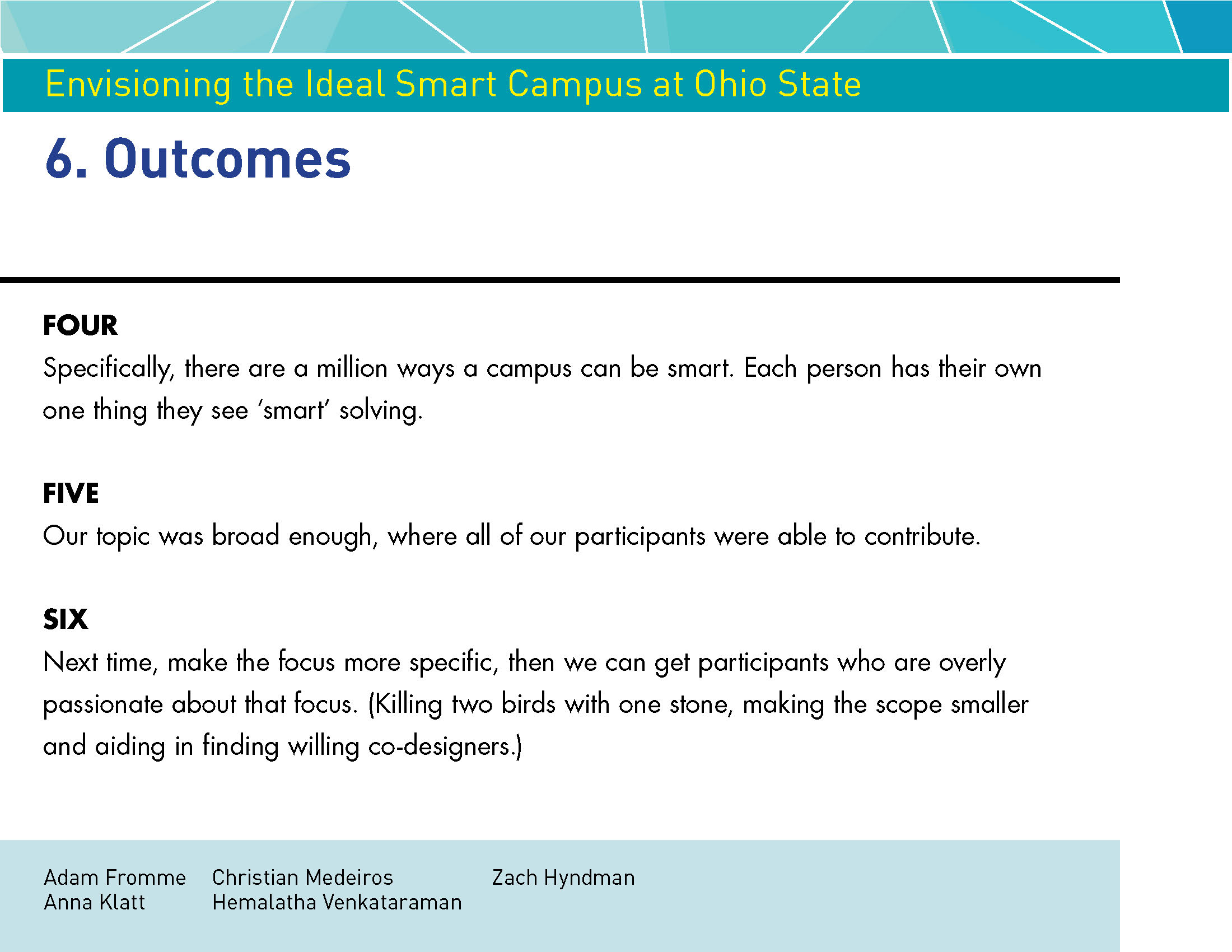
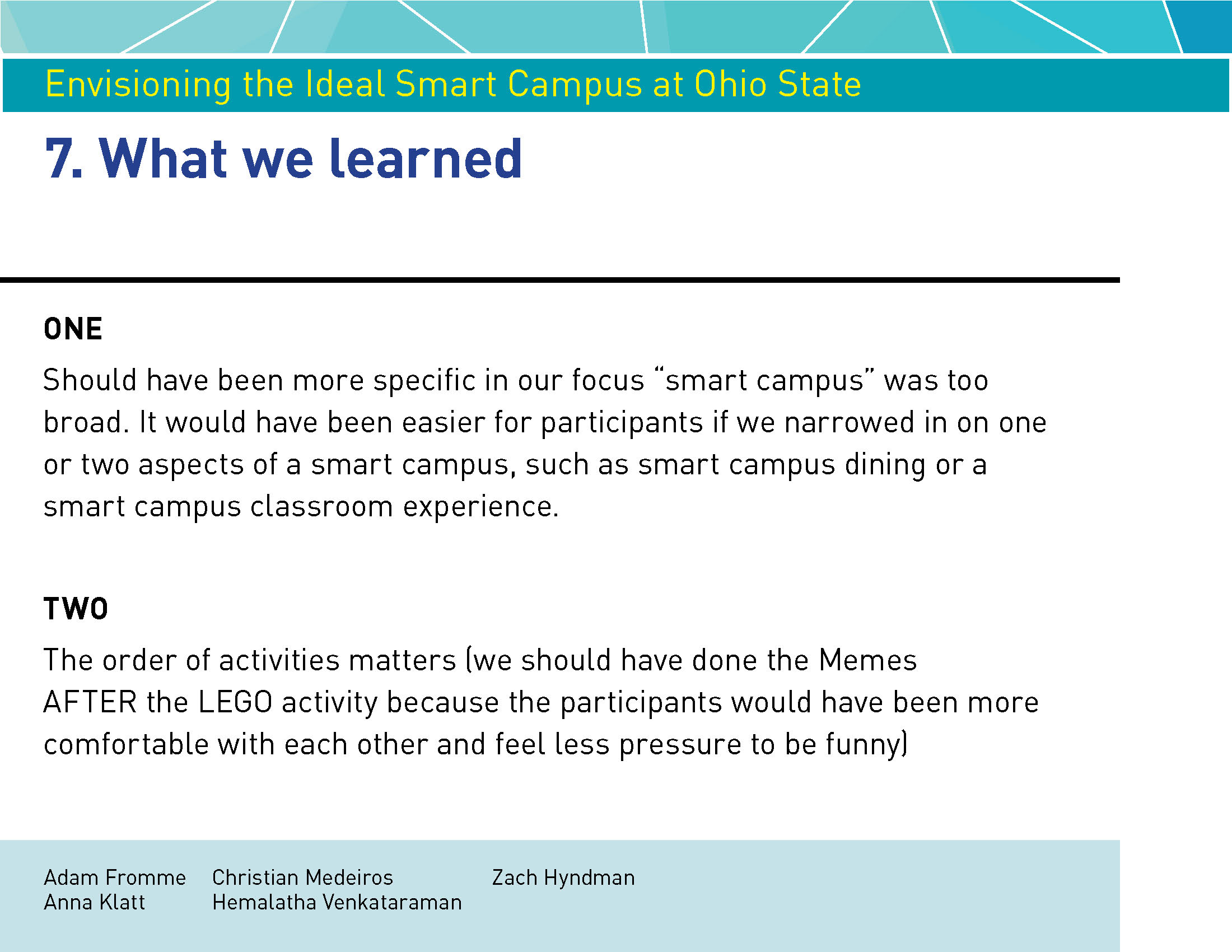
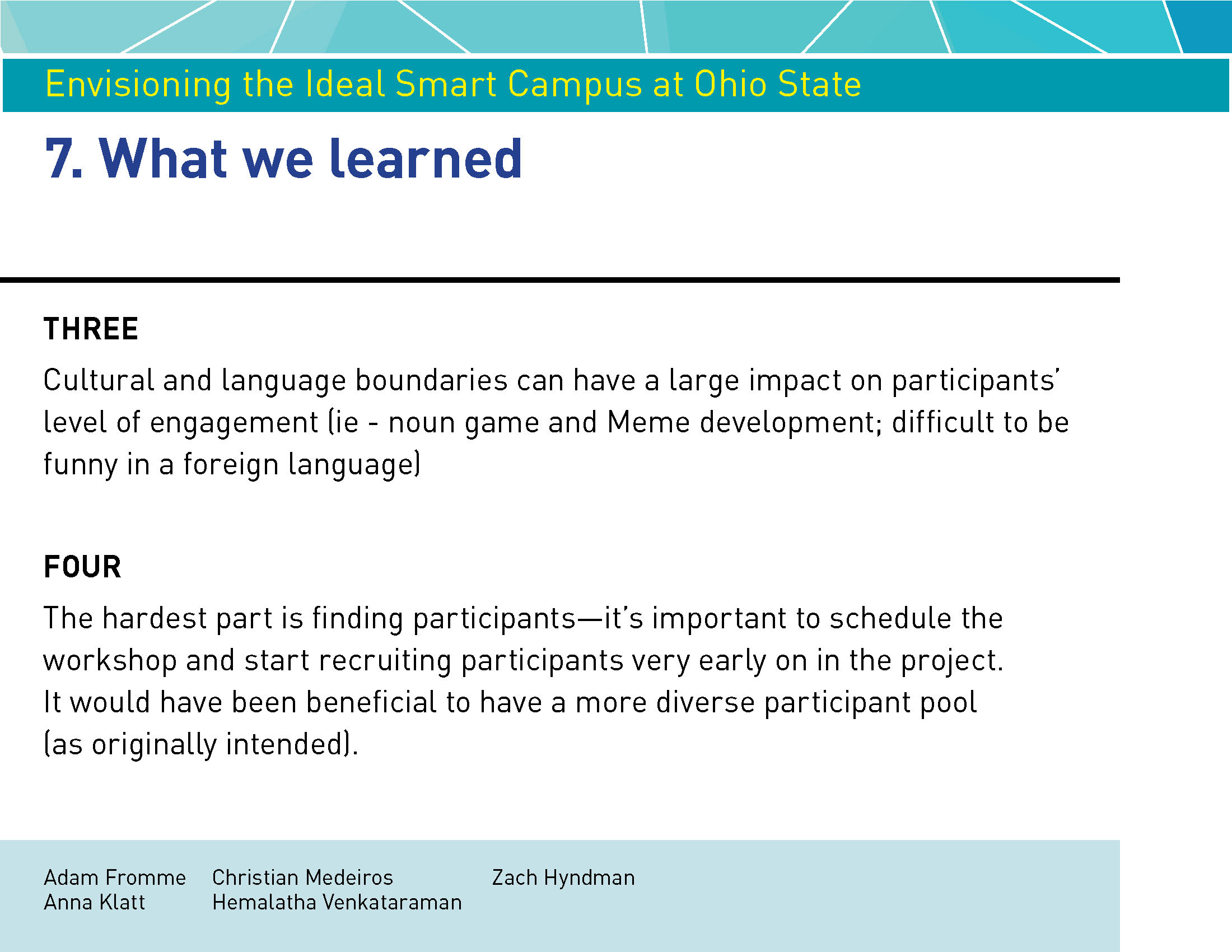
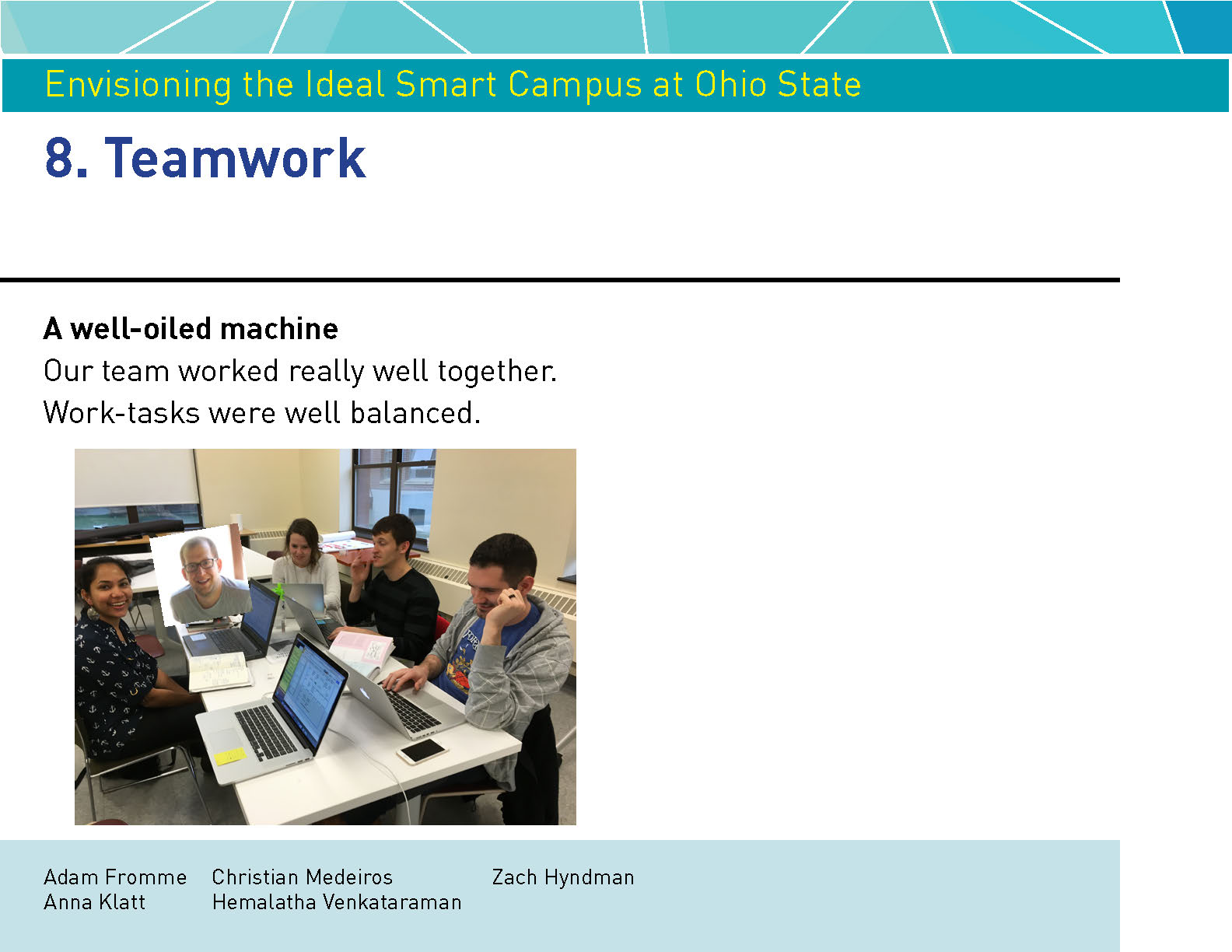
LEARNINGS
Interdisciplinary teamwork
Learned the importance of pilot testing methods and processes before final workshops
Generative activities using kinetic sand, legos, created games (meme and noun games), using visual and written notes in tandem to document process
Organization and documentation
Front end research processes and secondary research
Facilitating group sessions



